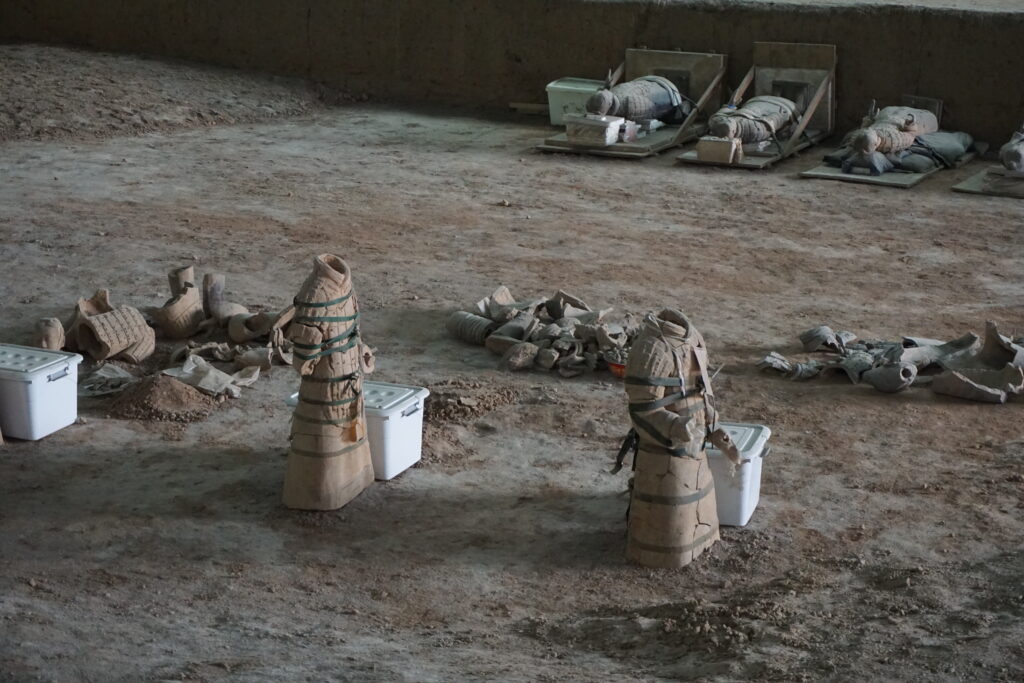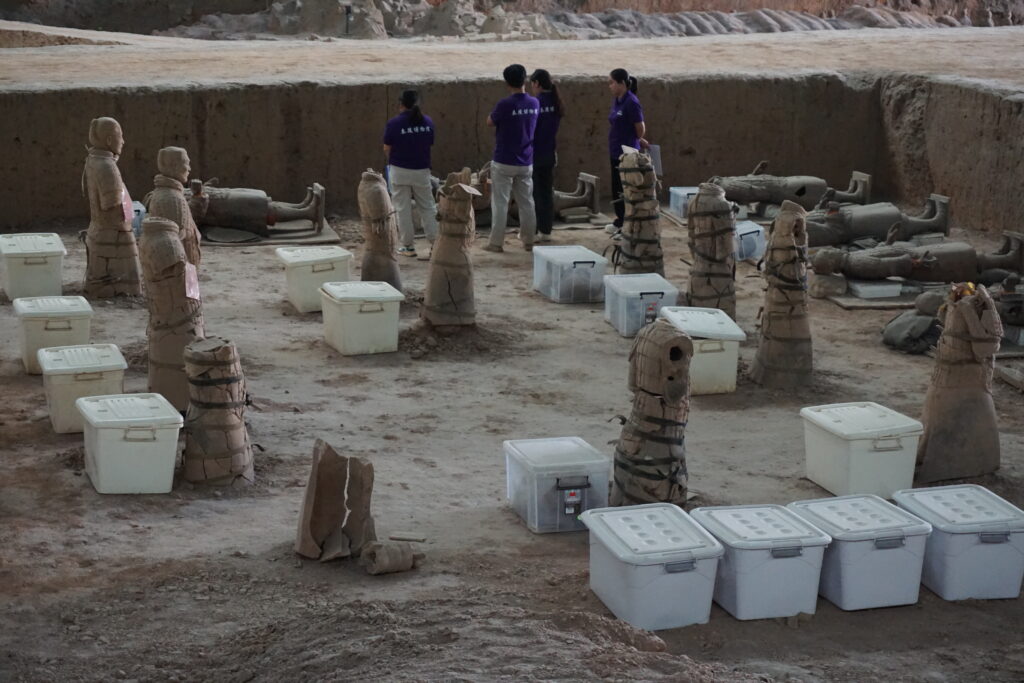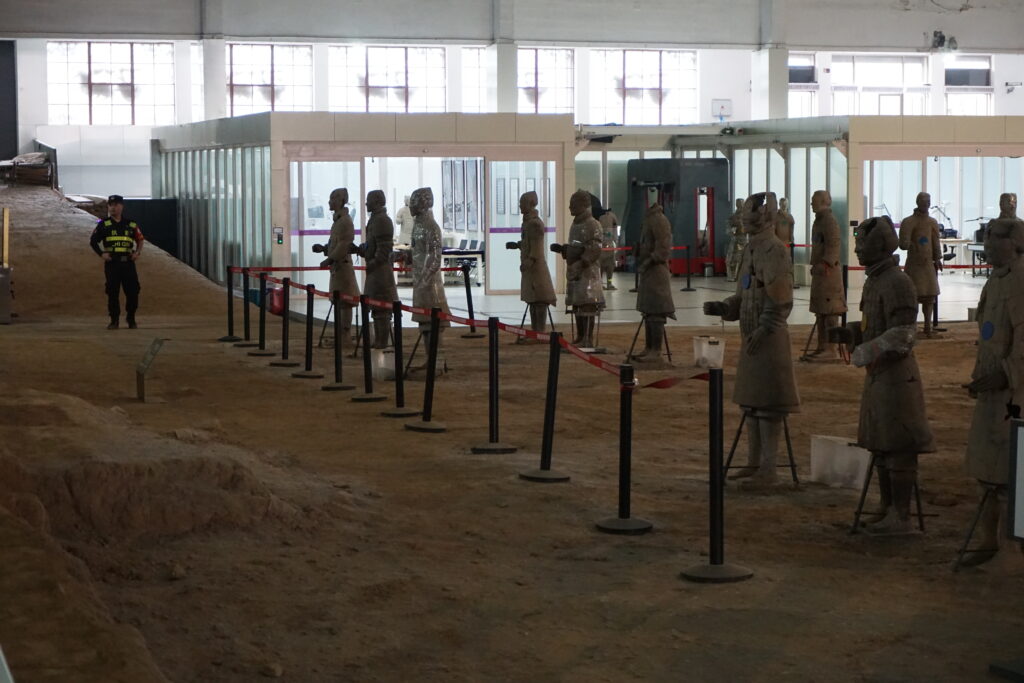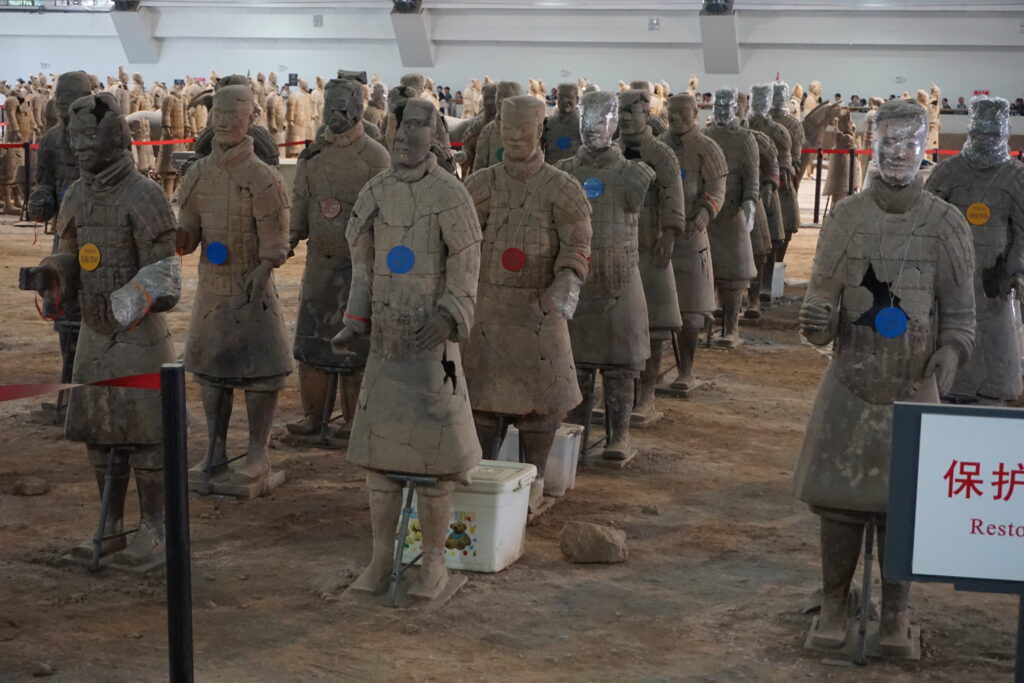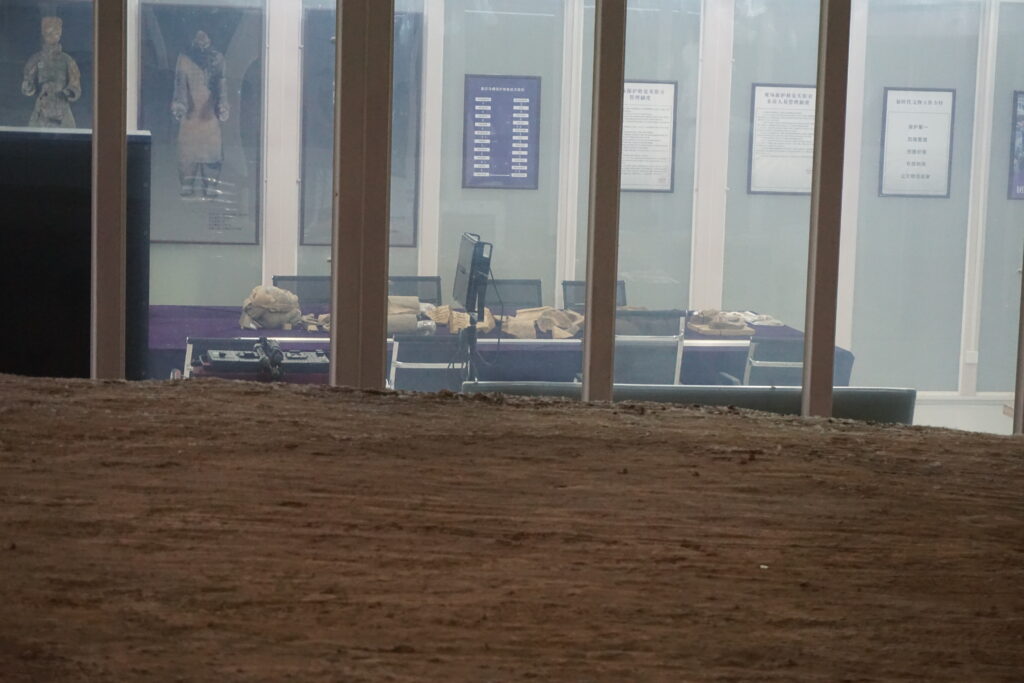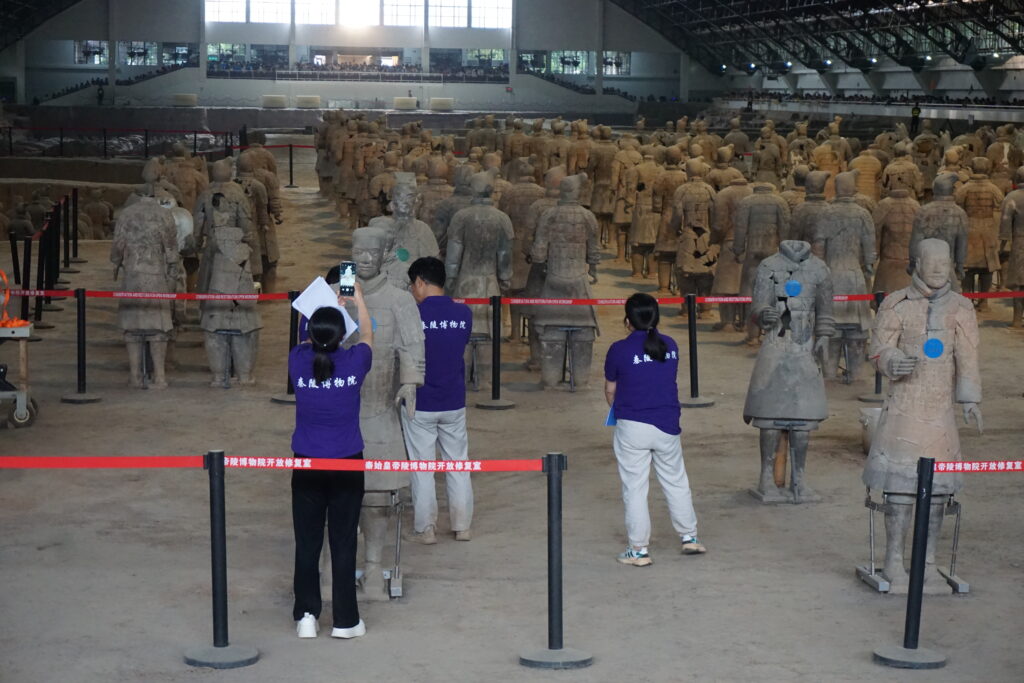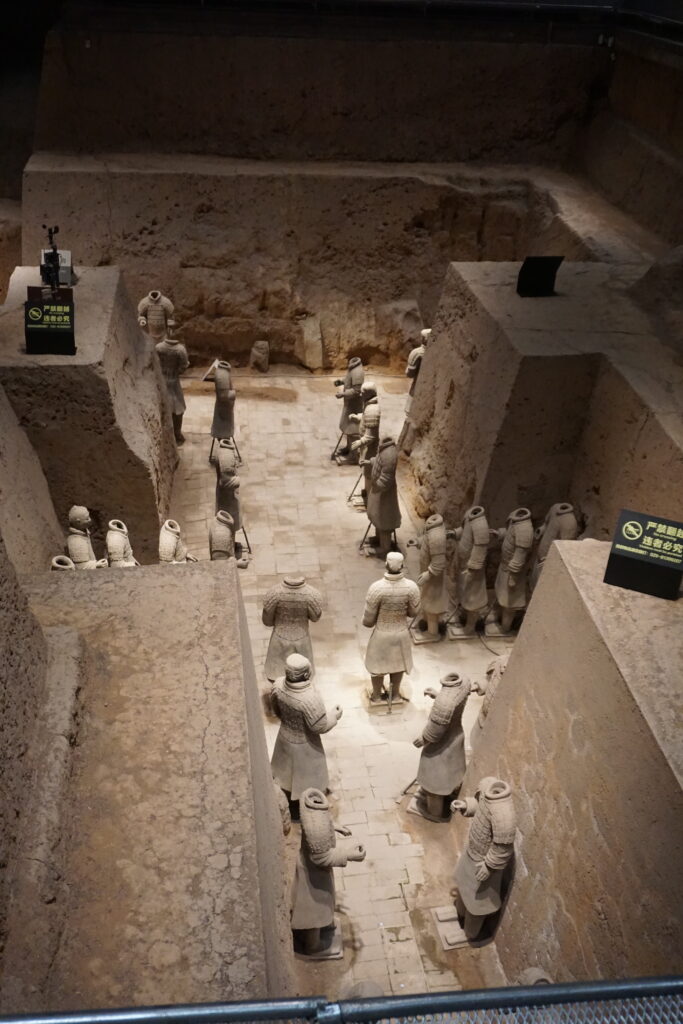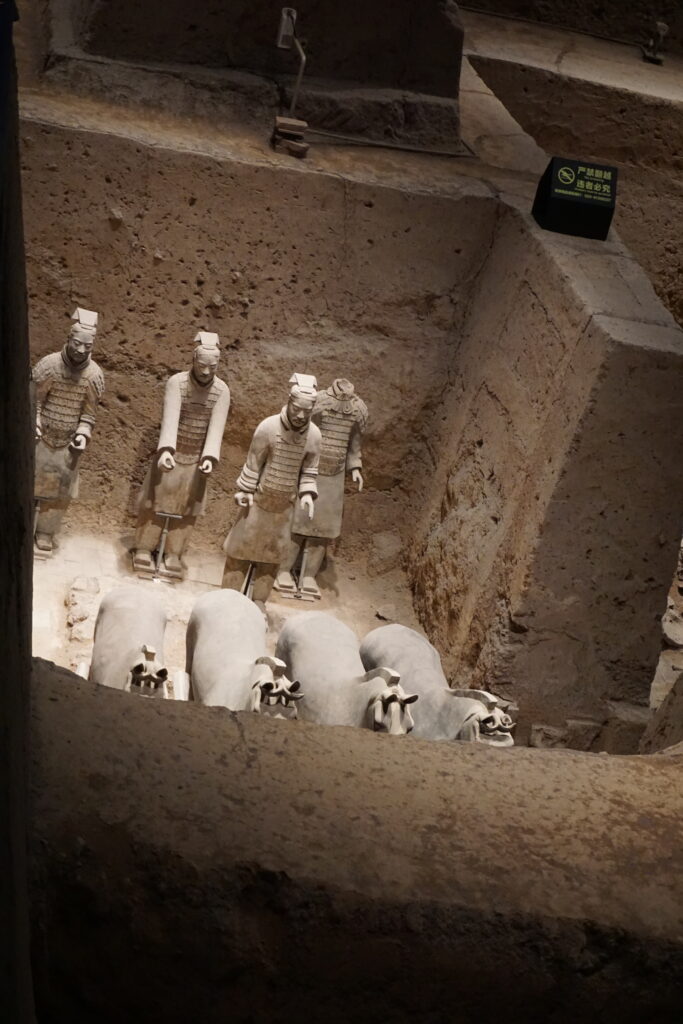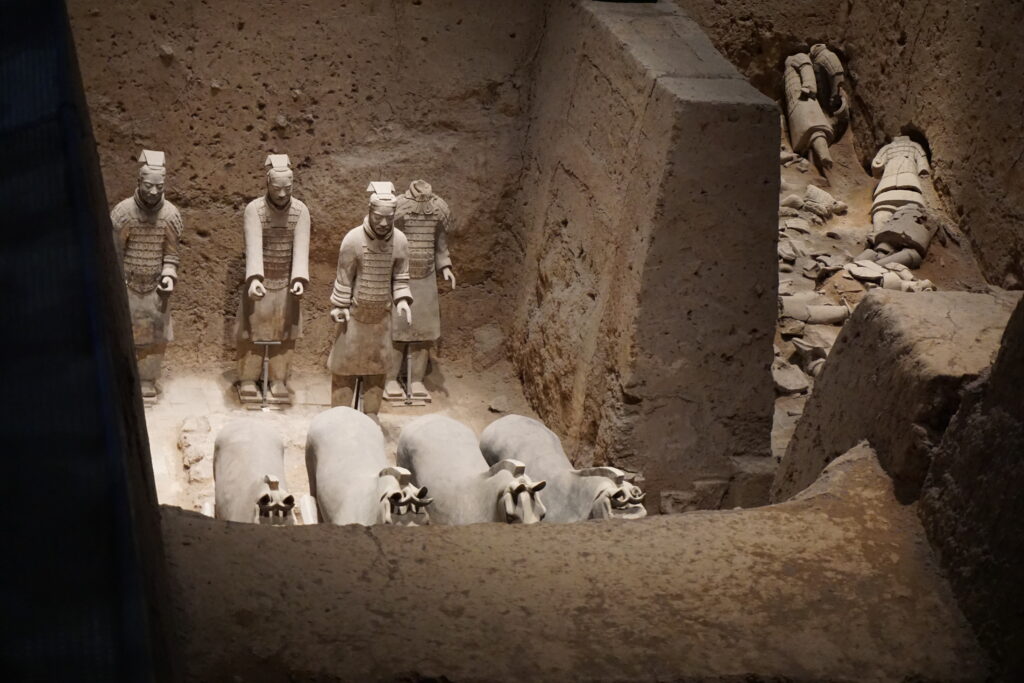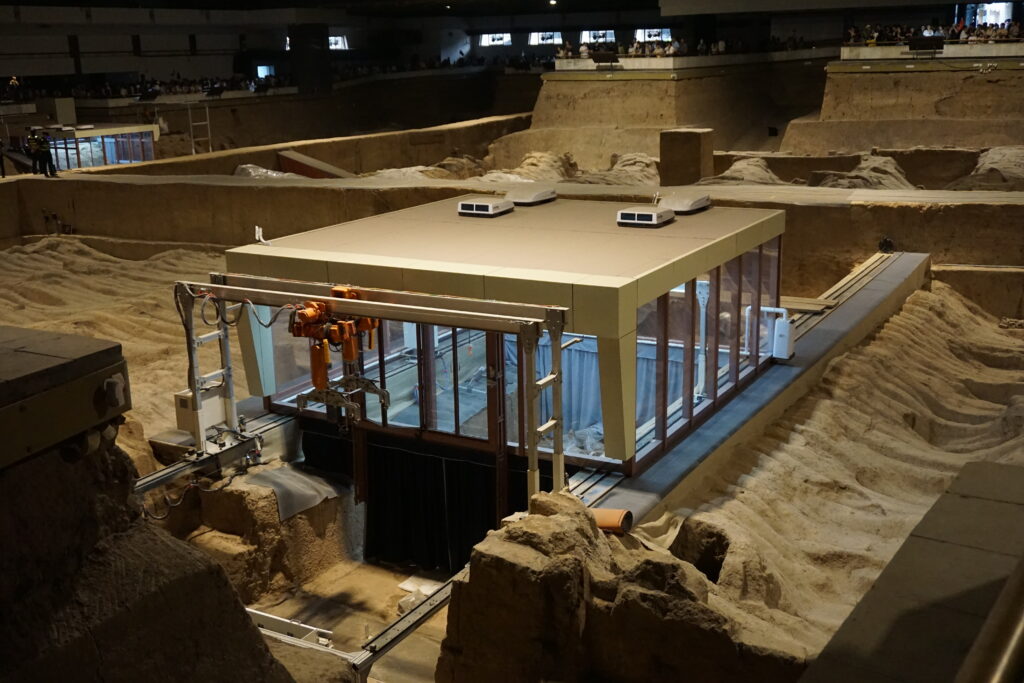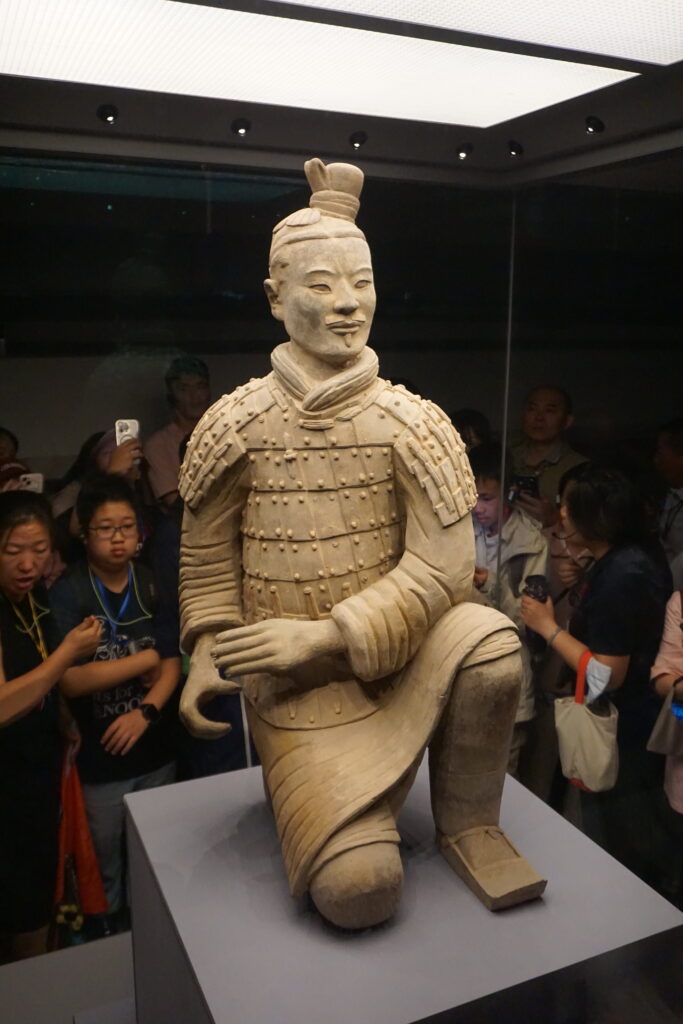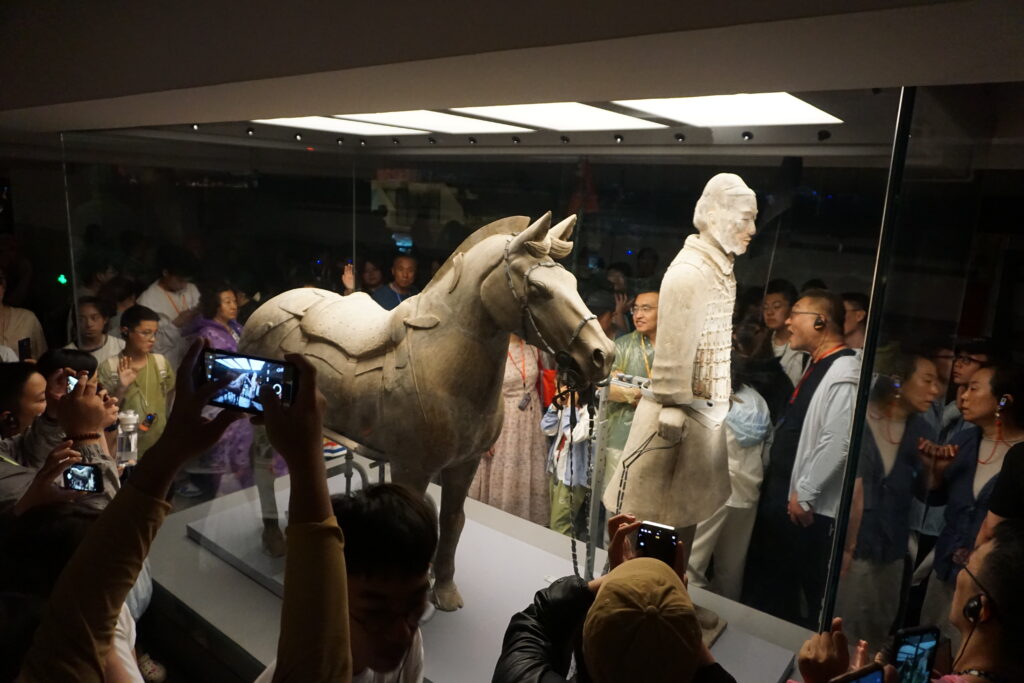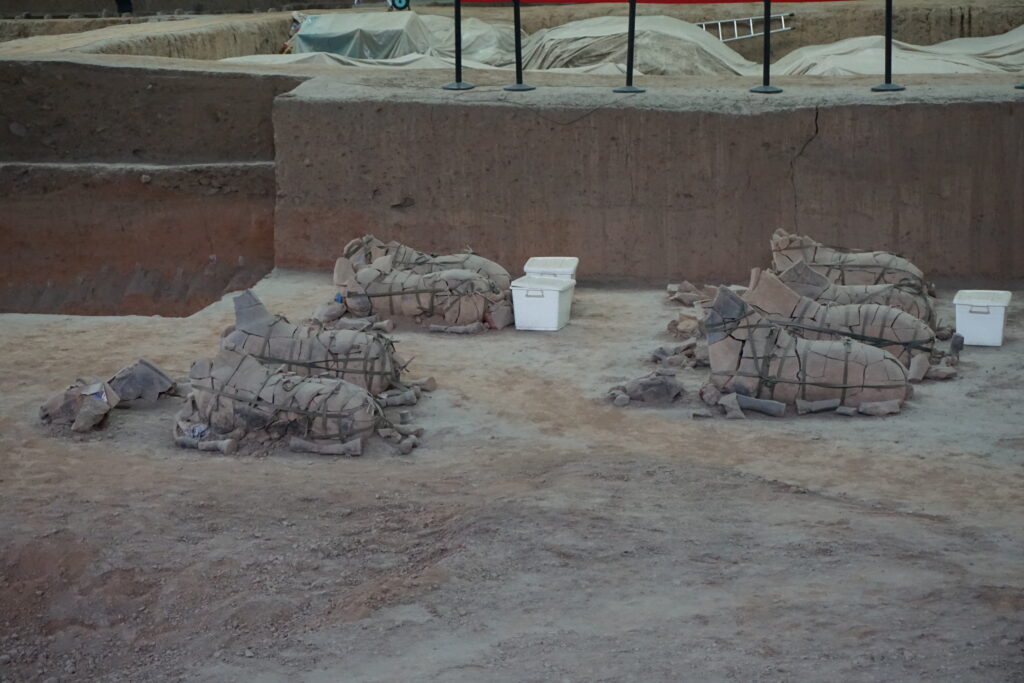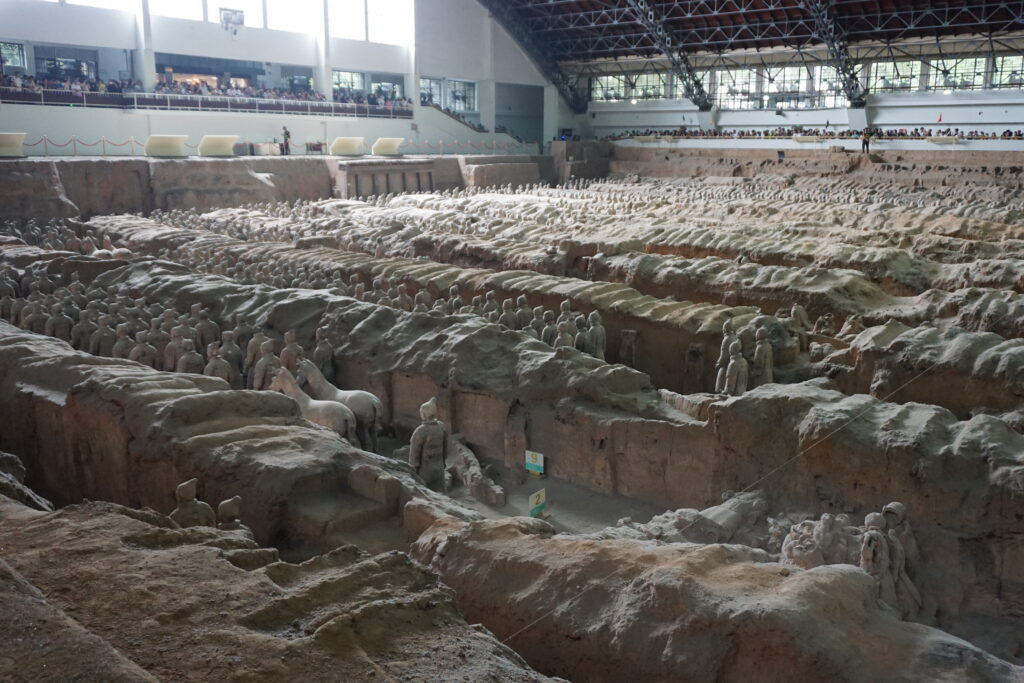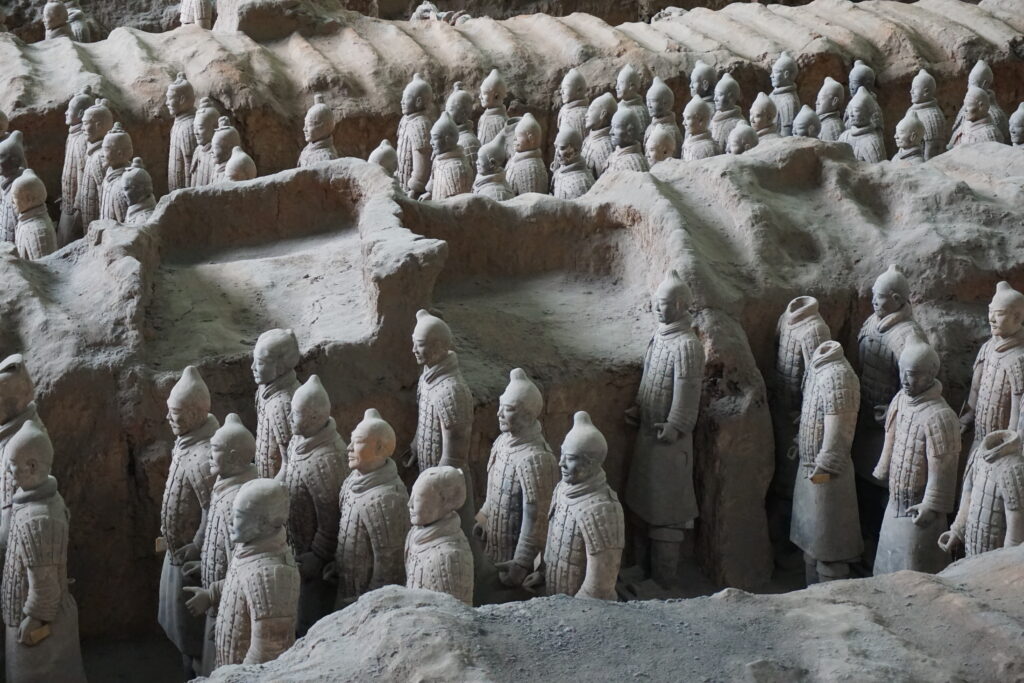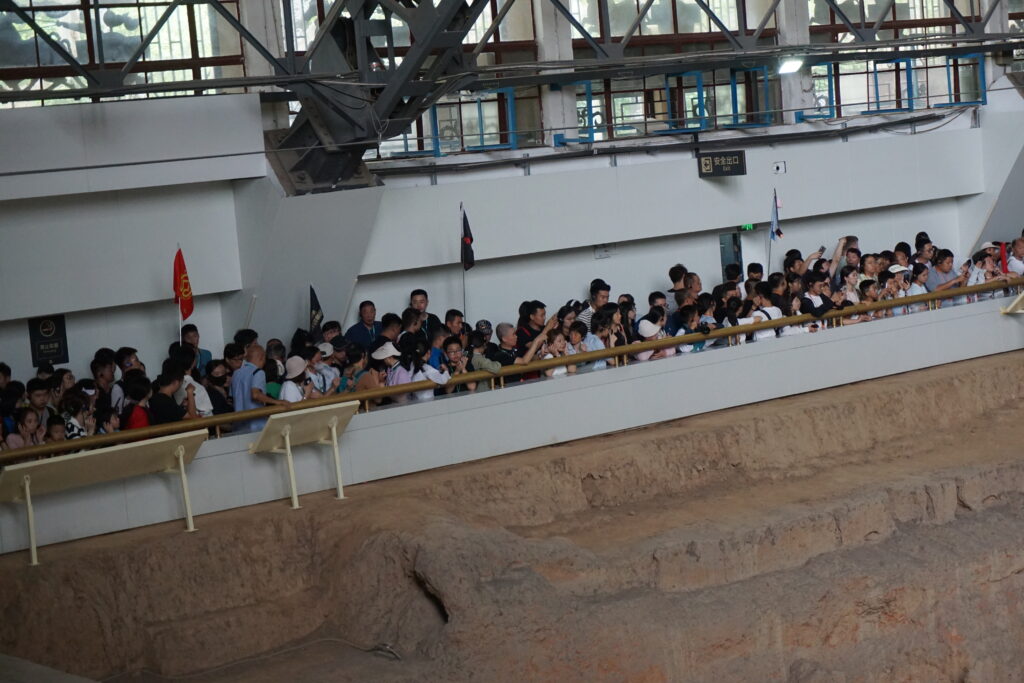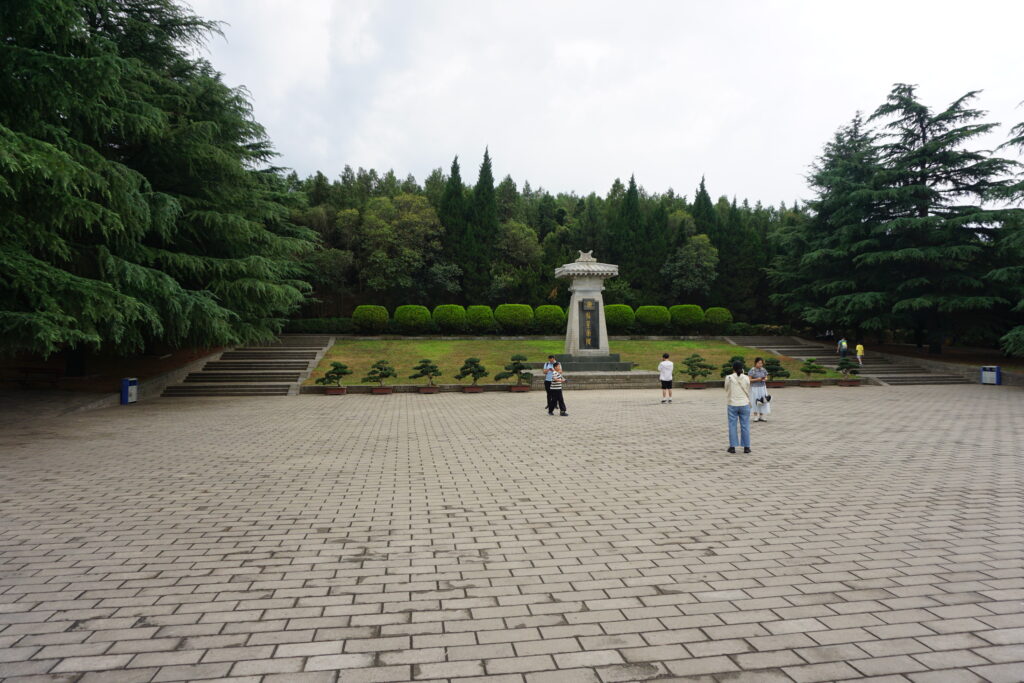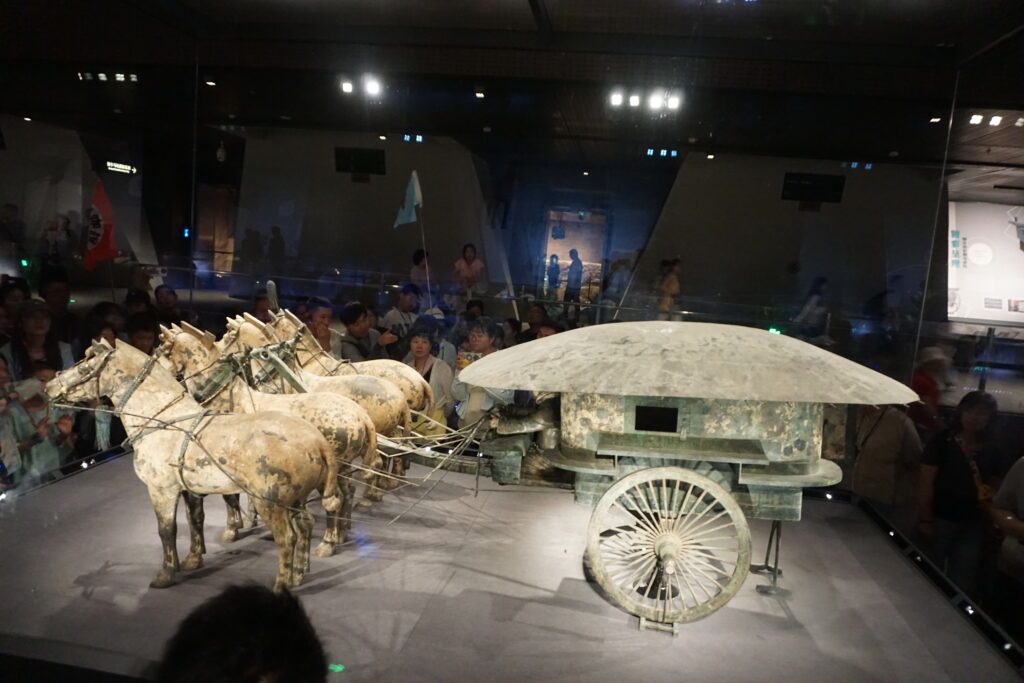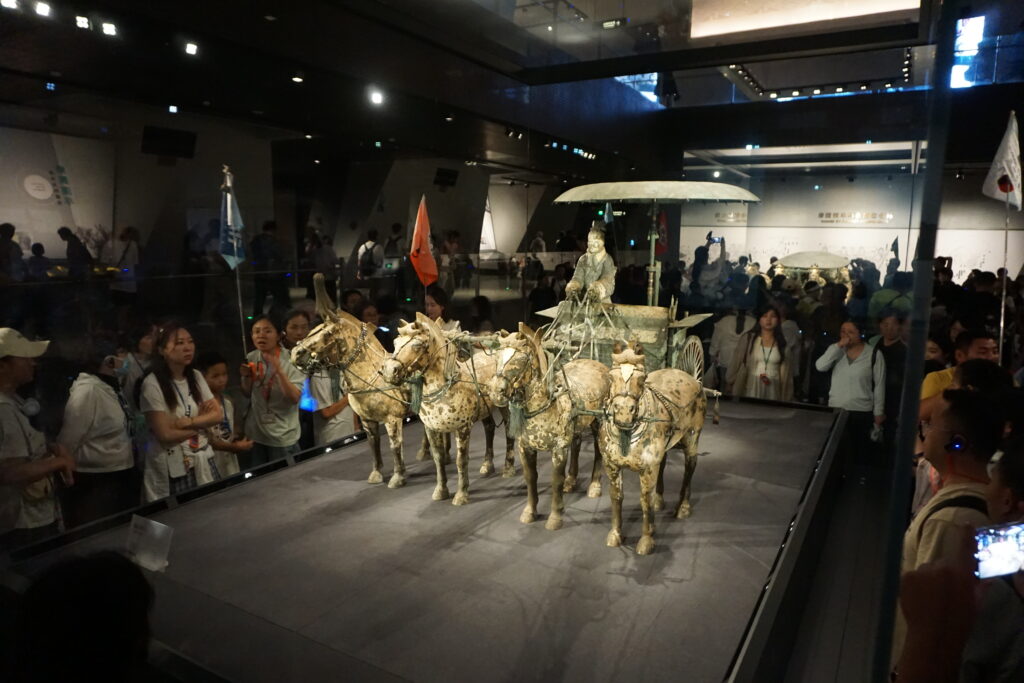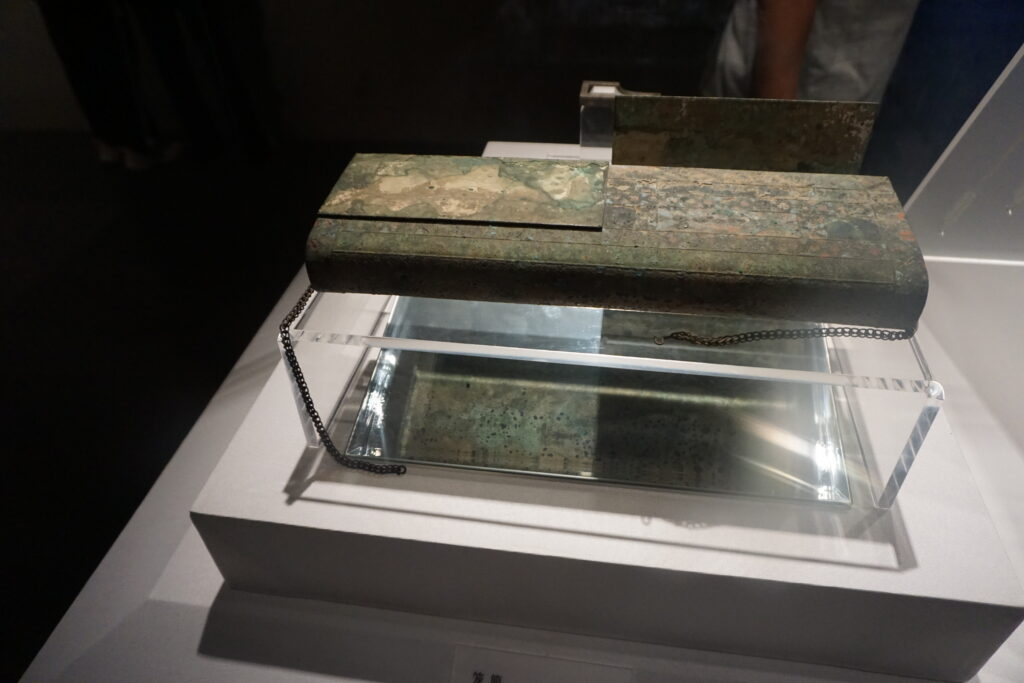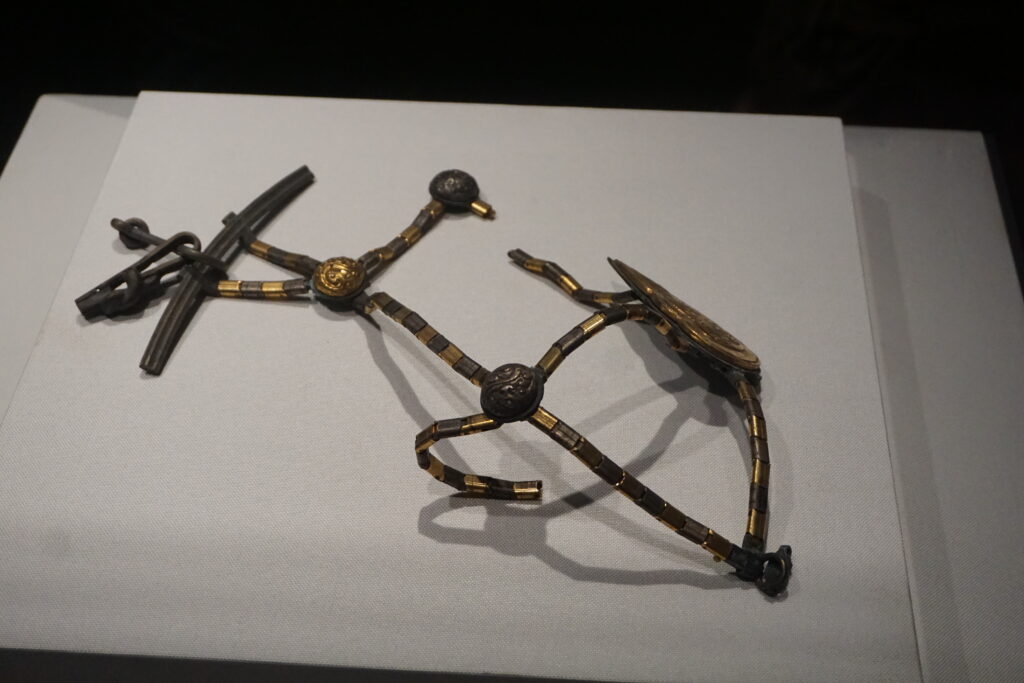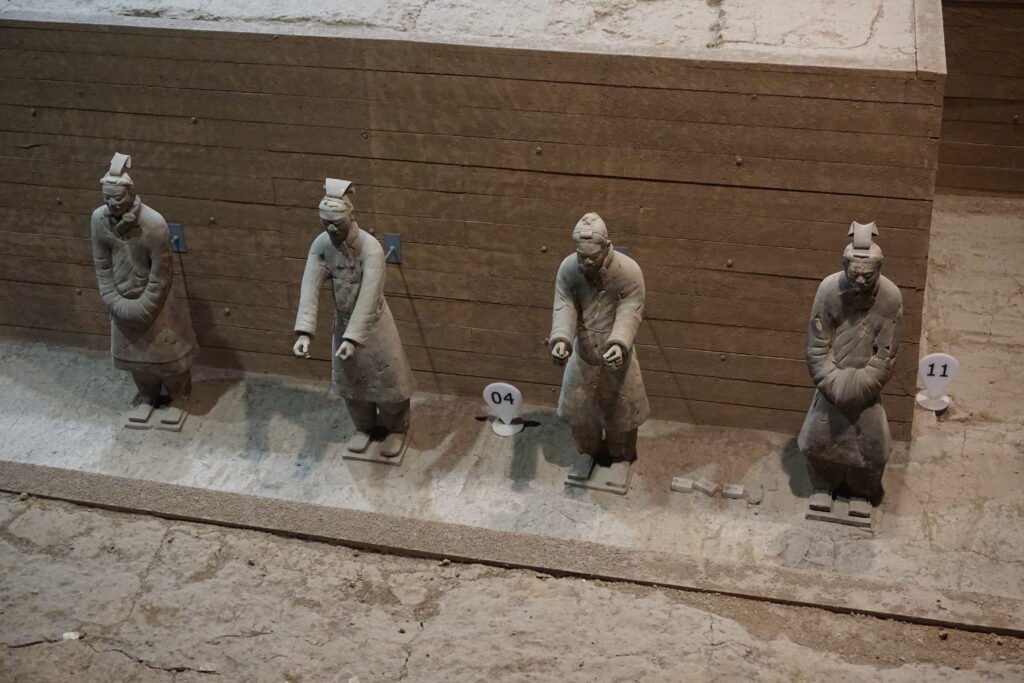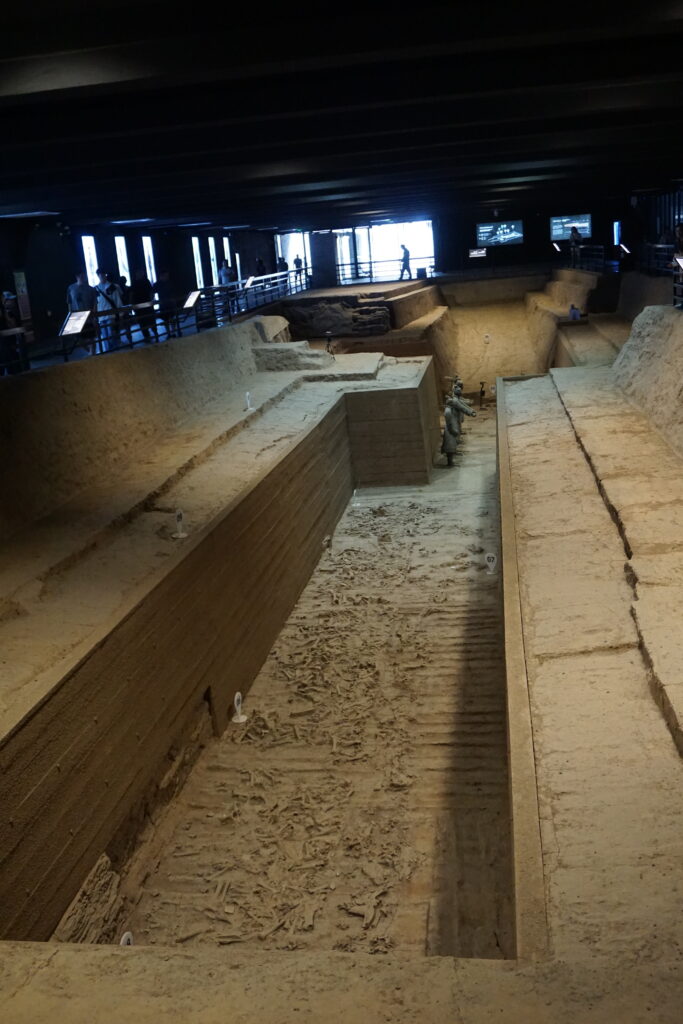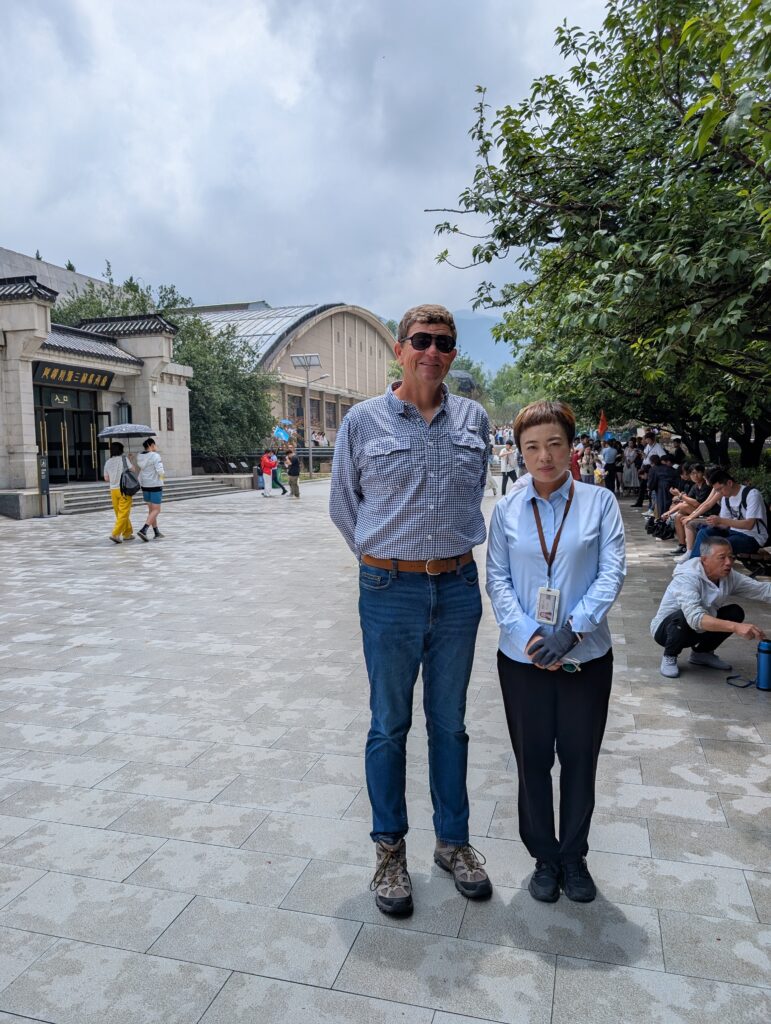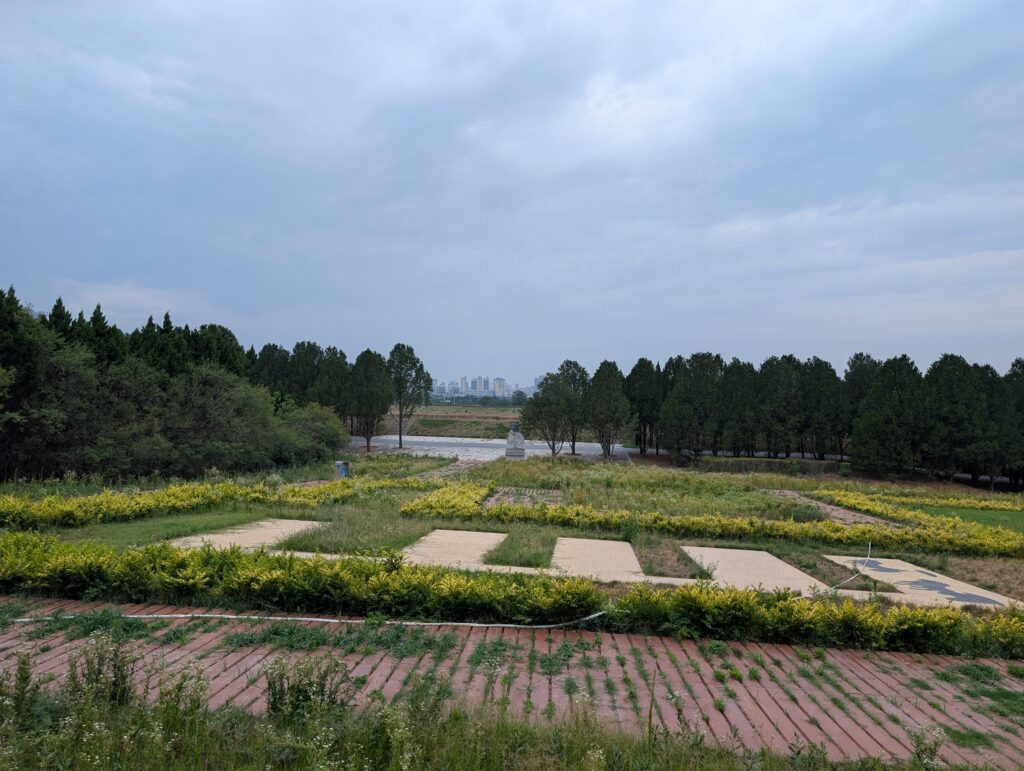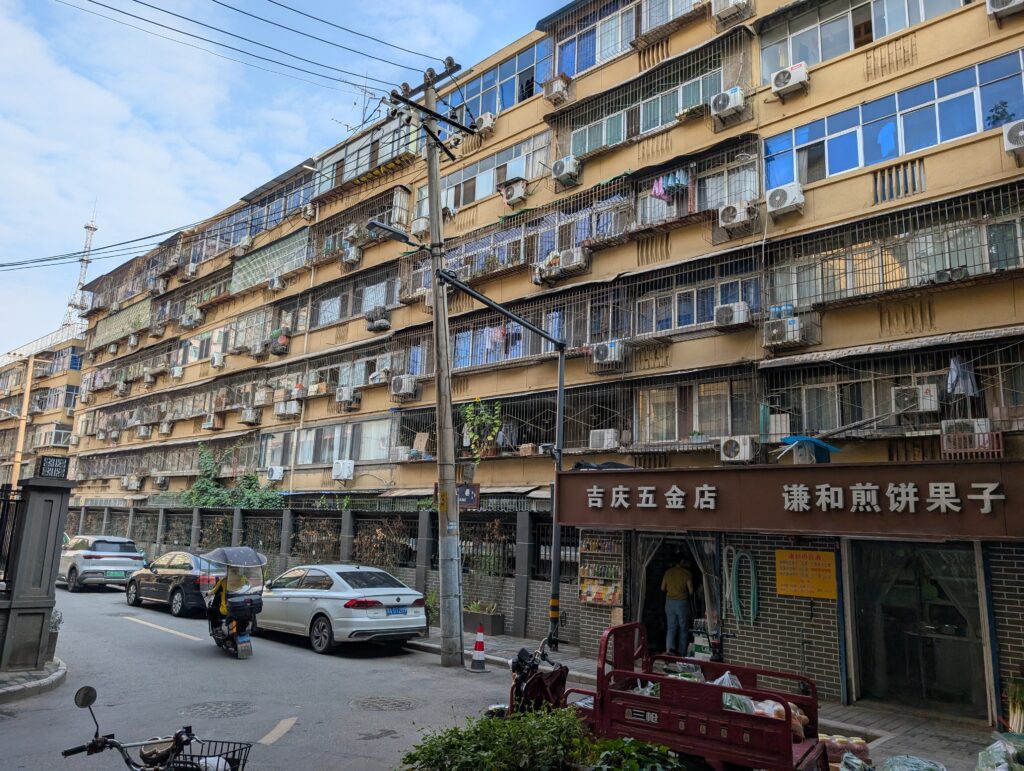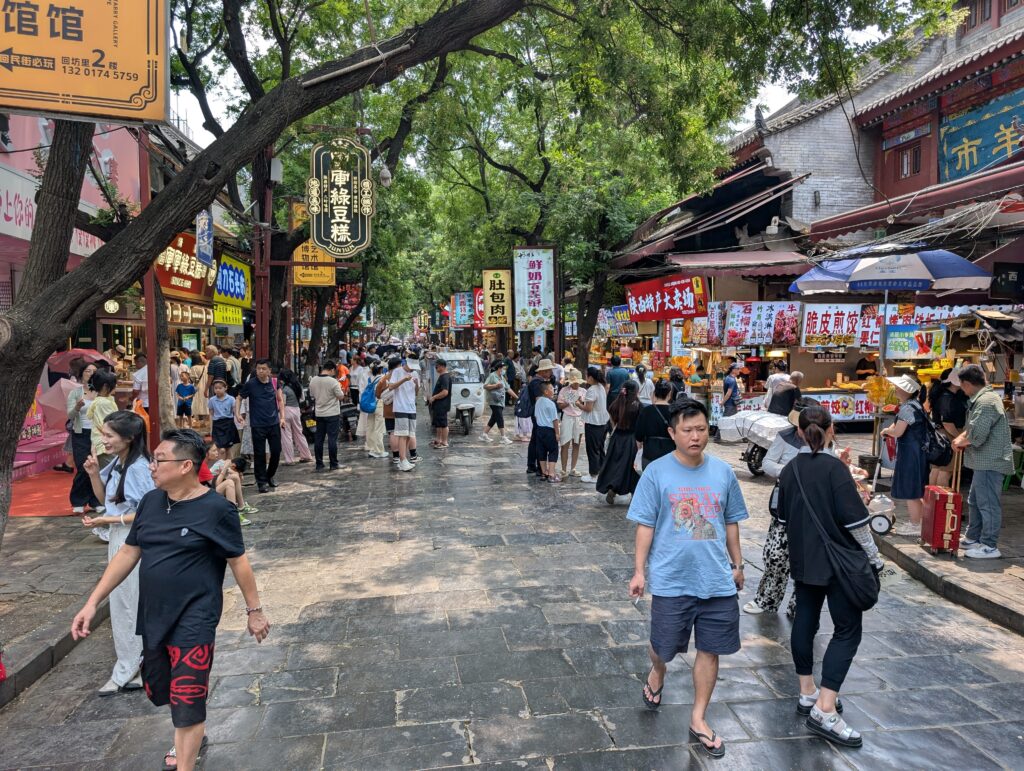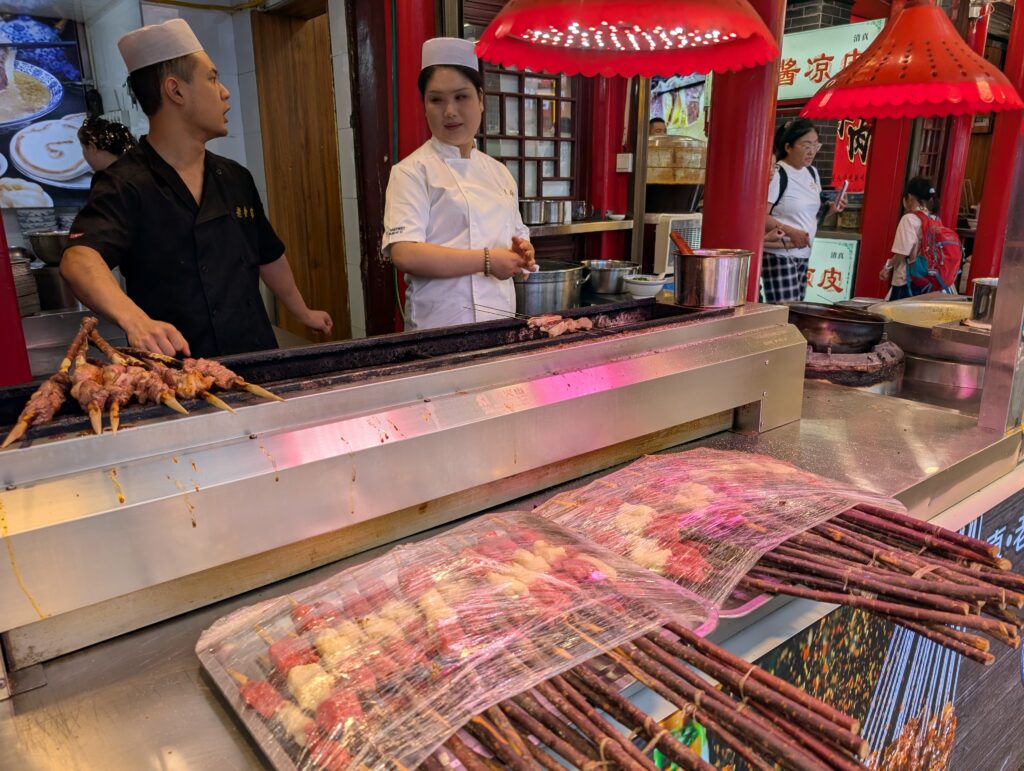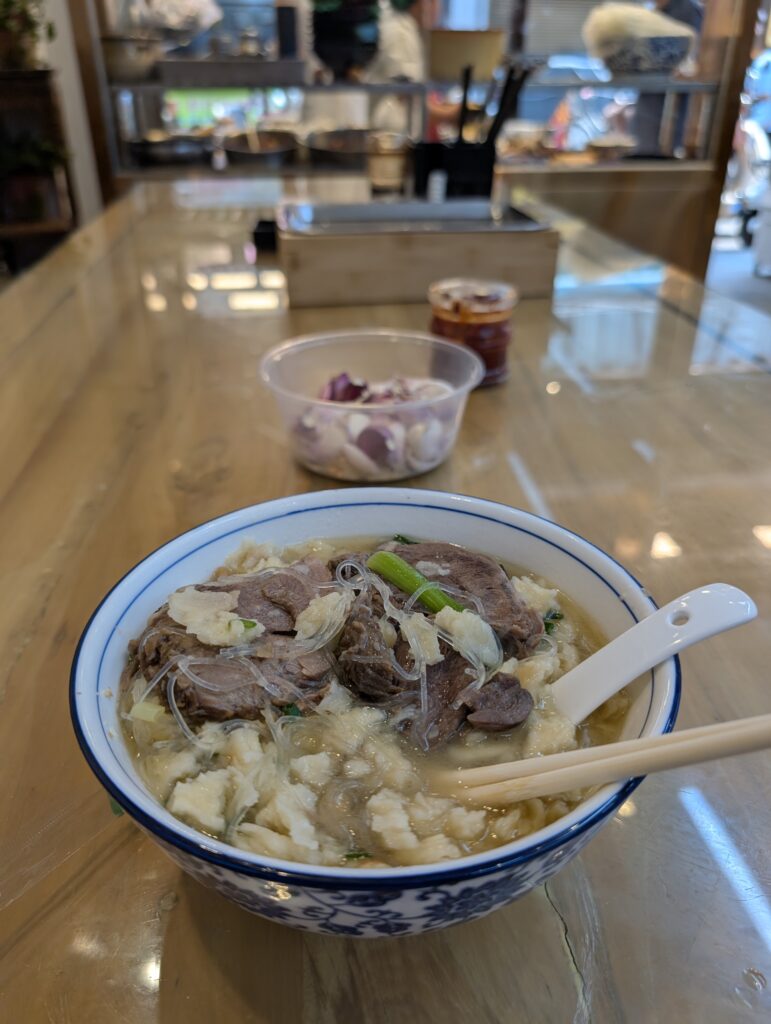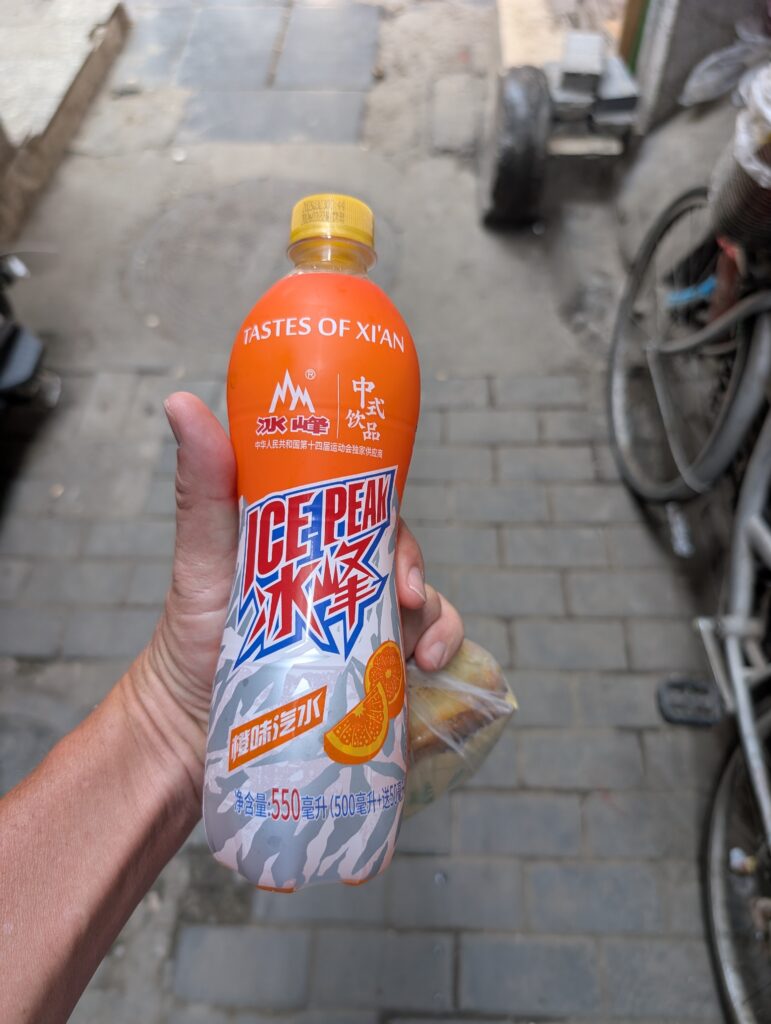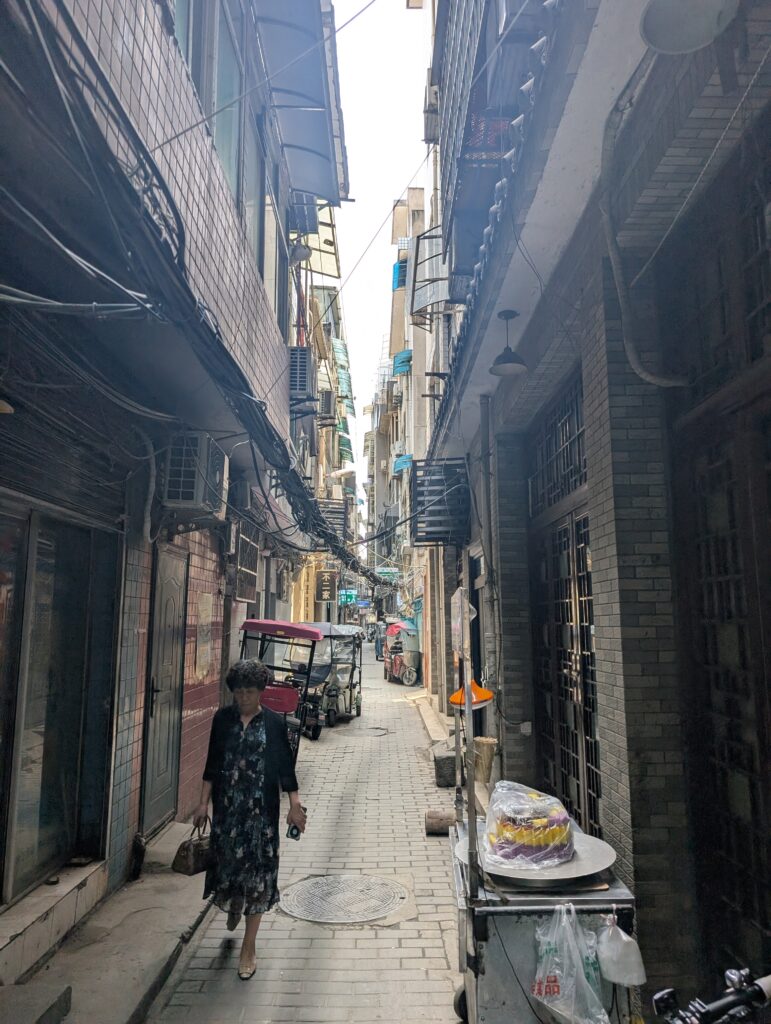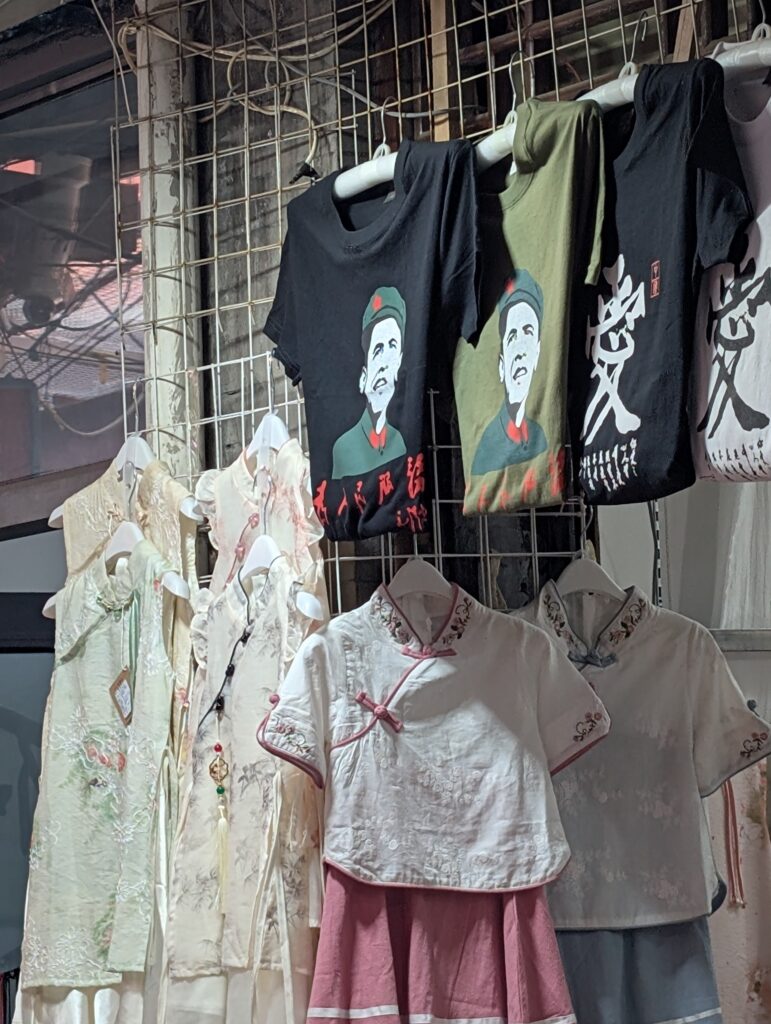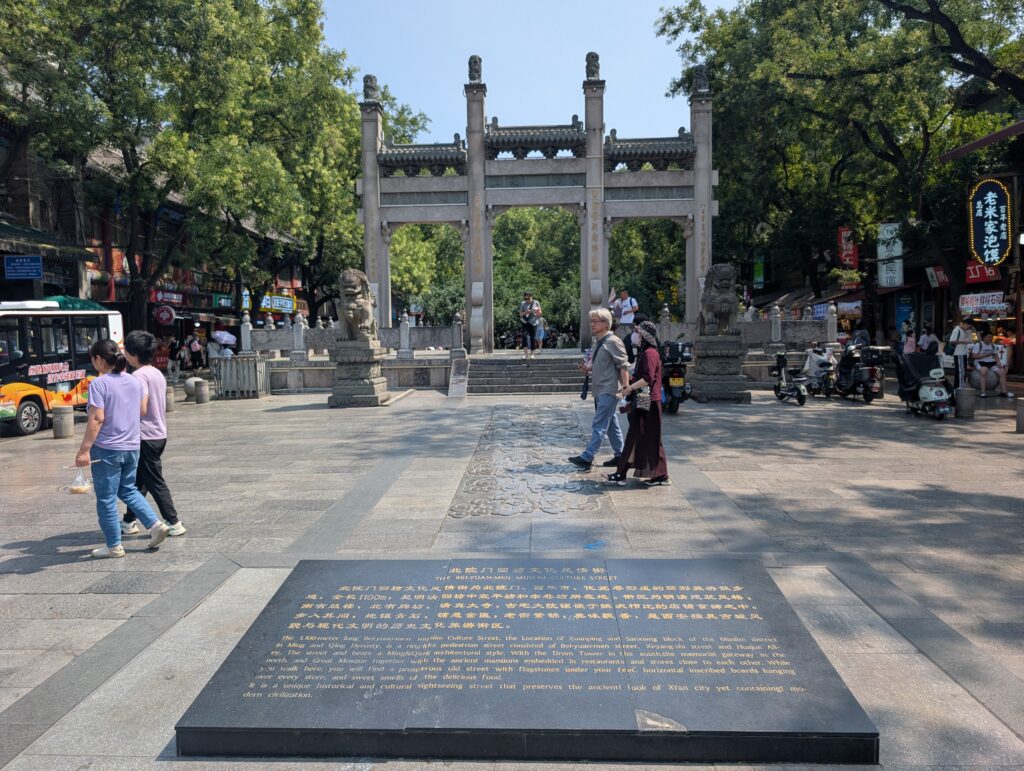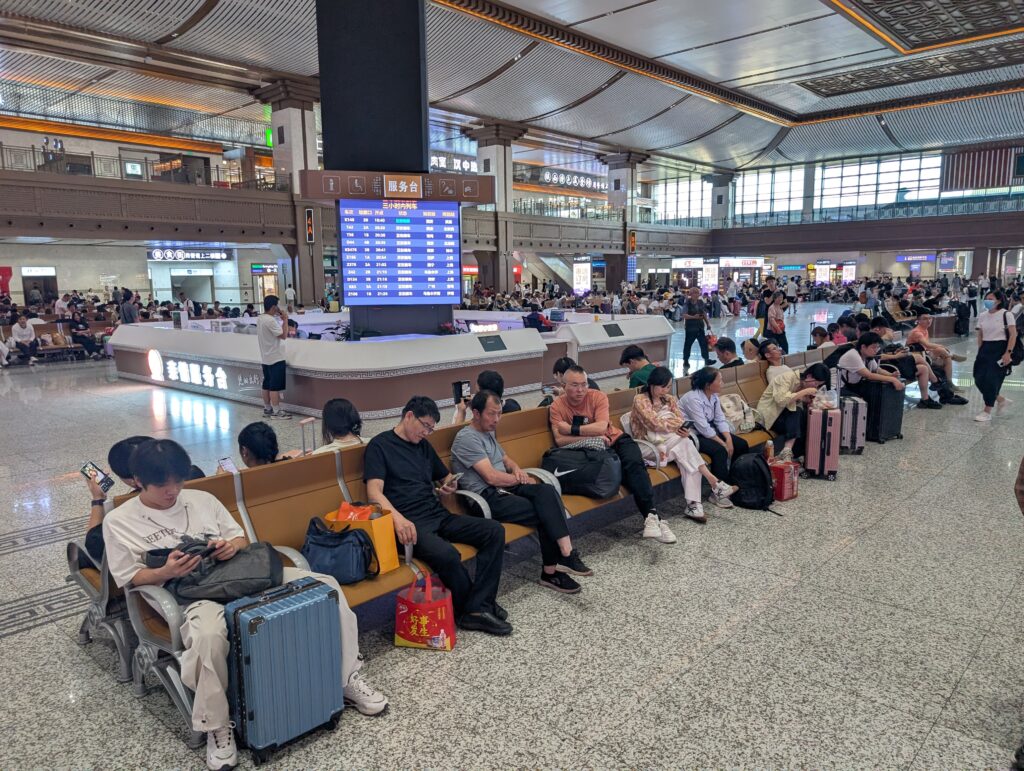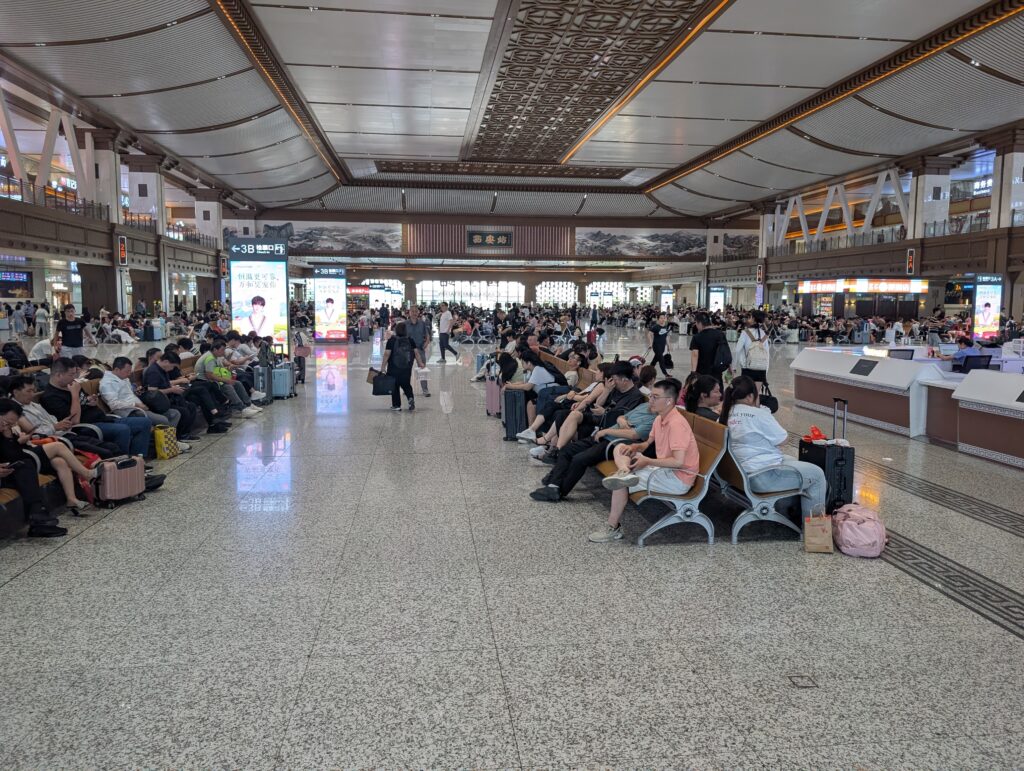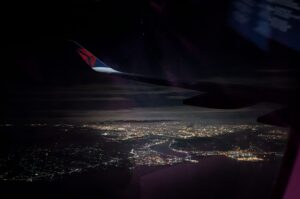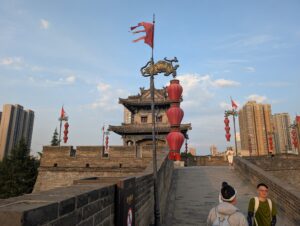Xi'an
More Than Just a Terracotta Army
Of my two stops in China, Xi’an was my favorite. I initially planned to go to Xi’an to see the renowned Terracotta Army. In 1974, farmers near Xi’an encountered evidence of larger than life figurines when digging a well. Ancient pottery had been found in the area over the years, but no one had any idea of the size of the find. It is now estimated that a total of 8,000 terracotta soldiers, each over six feet tall and unique – were buried in the third century B.C. by emperor Qin Shi Huang of the Qin (pronounced “chin) dynasty. Apparently, he intended to have a full recreation of his kingdom sent to the afterlife along with him. In a much more humane way than many cultures before and after him, emperor Qin Shi Huang opted to have sculptures created to usher his kingdom and servants into the afterlife with him rather than resorting to human sacrifice. Qin Shi Huang was the first true emperor of China. His dynasty may have been short-lived, but he set the stage for the Han Dynasty, one of the golden eras of ancient China.
Only about 2,000 figurines have been unearthed at this point. The Chinese government – in typical Chinese fashion – understands that there is no real hurry to complete the task of unearthing every last archaeological find and rather hopes that technology will continue to improve making it even more likely that better preservation will occur for the later finds. As time has gone on, pieces of chariots have been unearthed. There have been acrobats and gymnasts discovered. It was more than just an army. The army itself offers many insights into military tactics and technology of the time. Based on the location of the ruined figurines, much can be gathered about how armies would have been arranged for battle. The buried army is facing West, as the Qin dynasty’s enemies would have come from that direction. There is a vanguard, and there are flankers and a rear guard. There are different kinds of archers with crossbows. There are chariots and a few cavalry, though not many, as cavalry were not yet an important military arm. Each statue has a maker’s mark, and the detail in the depiction of the armor is interesting.
When visiting with a guide, you get a full description of how to interpret garments and hairstyles to determine rank and task in the army. There is a museum to help you interpret if you do not have a guide. There are three main archaeological pits on site, and a couple of other pits at a mausoleum site for the emperor a couple of kilometers away. It takes some hiking to get to the other location, and a lot more hiking to get around it. The mausoleum site is like a large park with a couple of digs within it. Most people pay 50 yuan apiece to ride this shuttle, but the walk was doable and I managed it. Nearly all of the tourists I saw the day I visited the Terracotta Army site were Chinese. I was mildly surprised to see how many people in a much worse economic position than me were willing to shell out the money to take this shuttle. I suppose it isn’t much different from Americans eating at restaurants and buying $3 Cokes from convenience stores despite living hand-to-mouth. I completed my economical visit to the Terracotta Army site by riding a public bus and subways back to the city center just as I had en route to the archaeological site.
The Terracotta Army was not my first stop in Xi’an, however. After a long flight delay and a late arrival in Xi’an, I hopped a Didi (Chinese ride sharing app) to my hostel. The flight delay had caused me to miss the last metro train to the city center by ten minutes. I found my way to town and paid a few more yuan than I would have liked, but it cost less than a similar private ride would have cost in America. My arrival was late, but it took me a while to wind down from the excitement of figuring out how to negotiate my way from the airport to town, and from walking a bit in the city center to the taxi. I went to bed late.
(Continued)
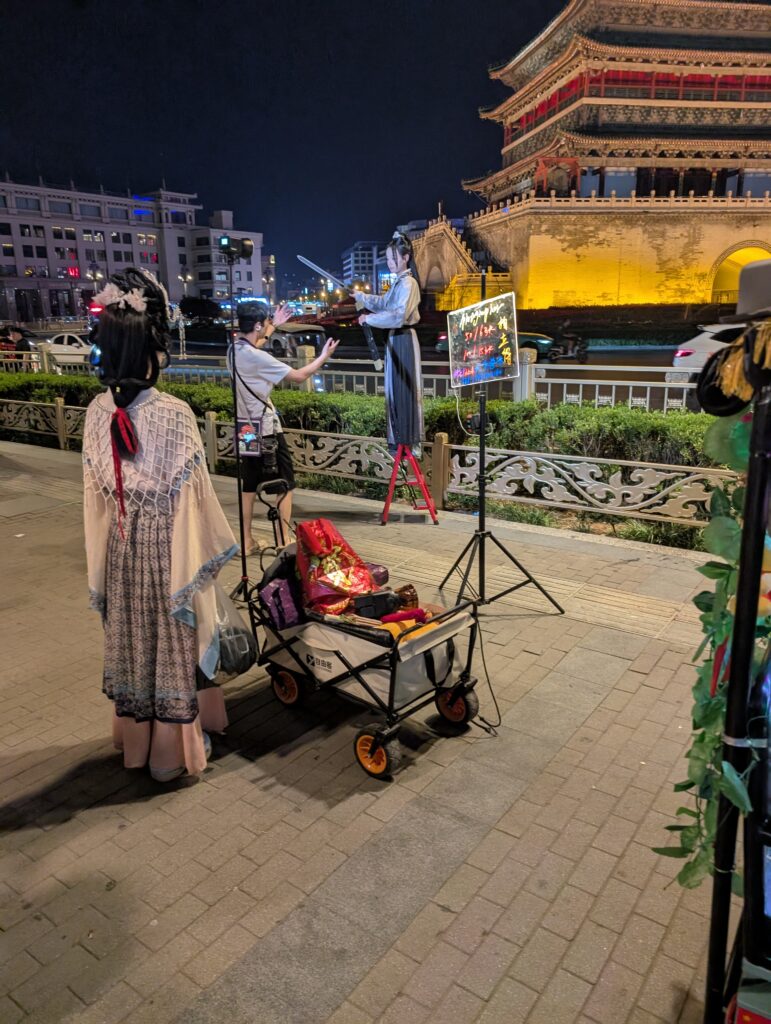
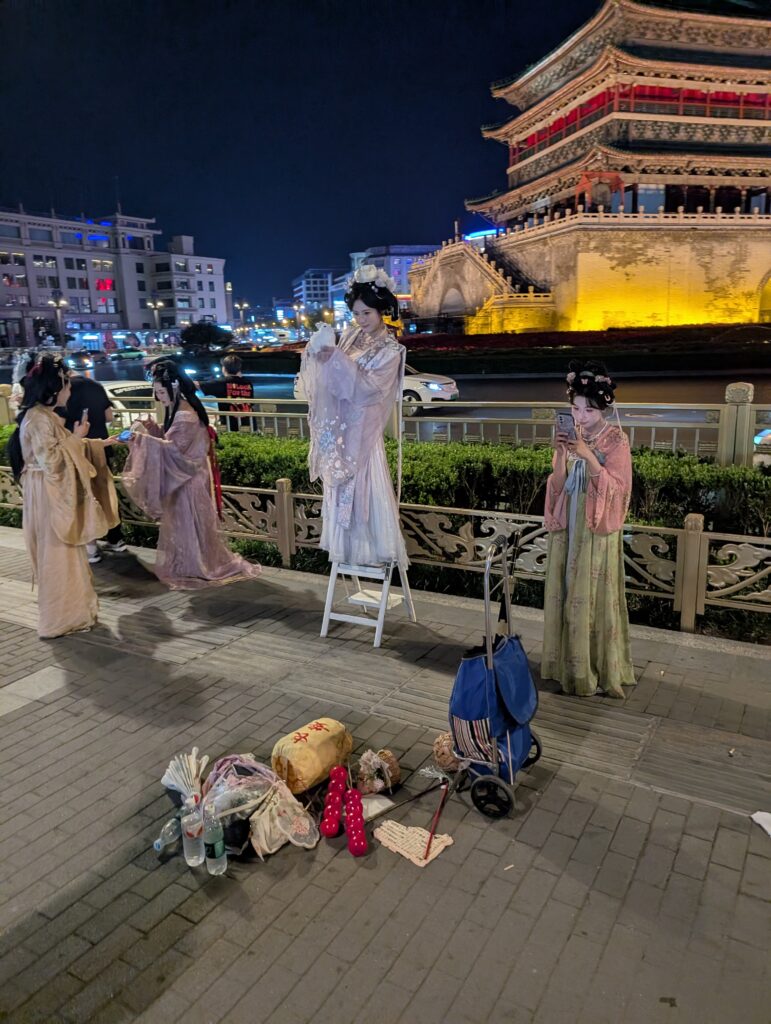
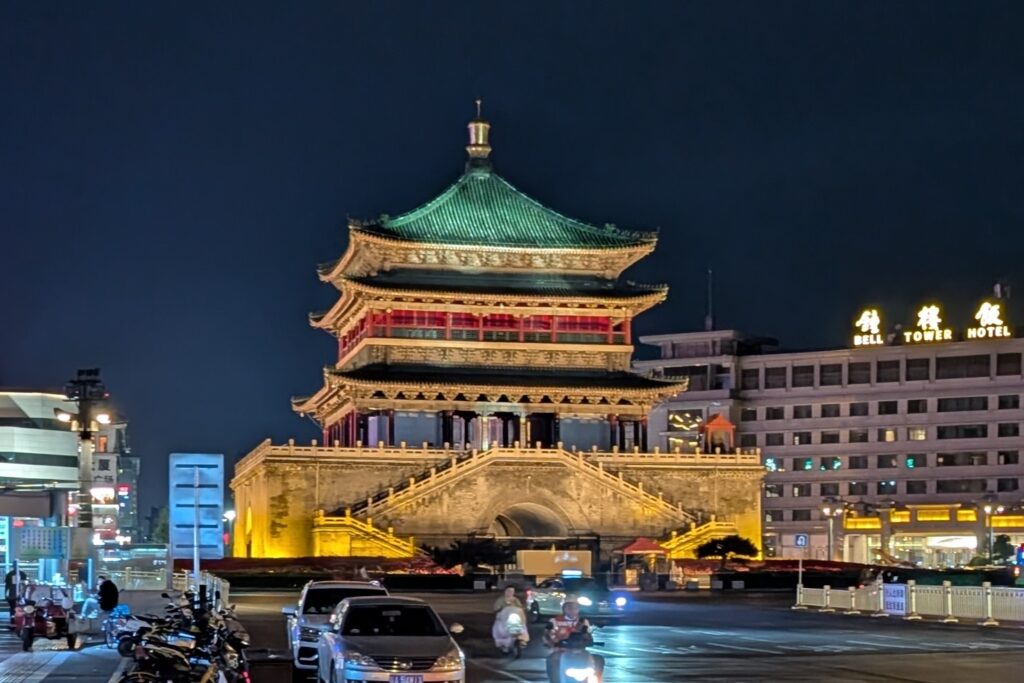
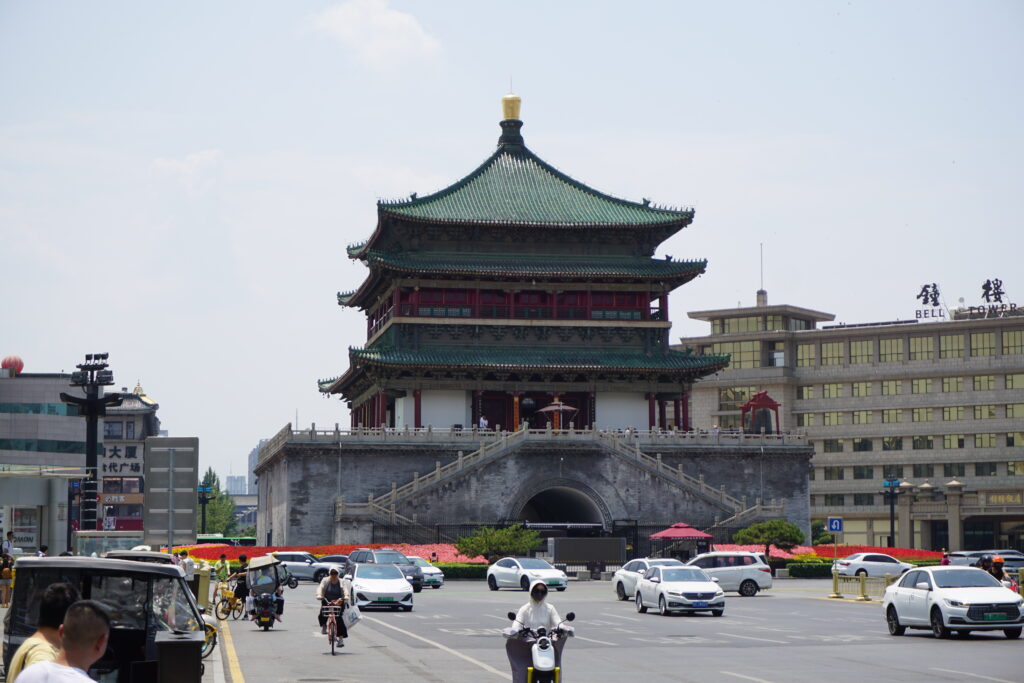
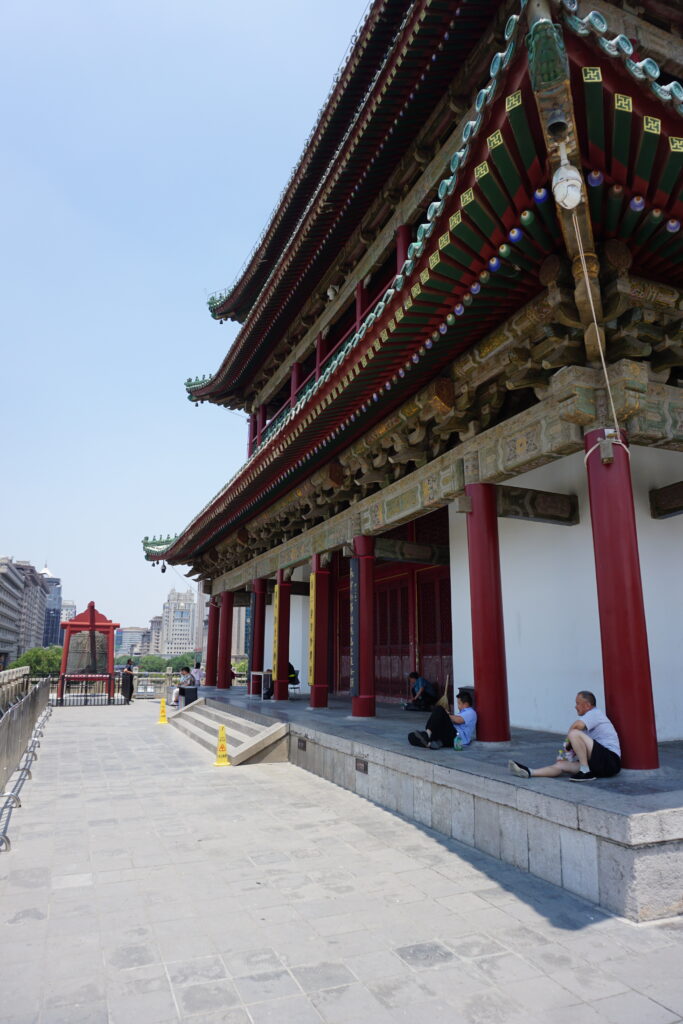
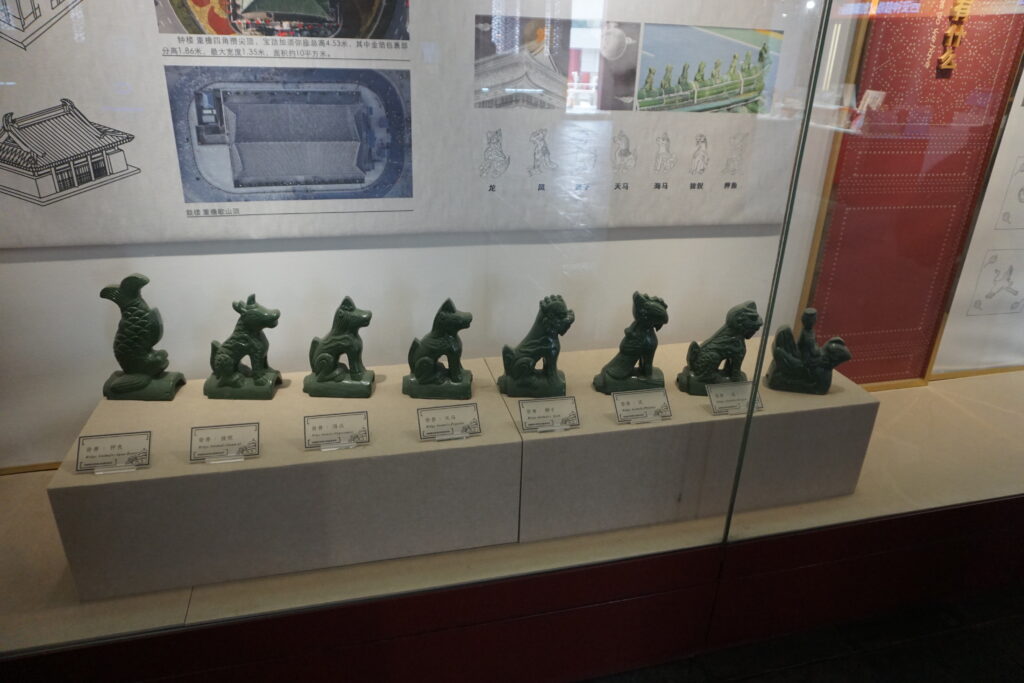
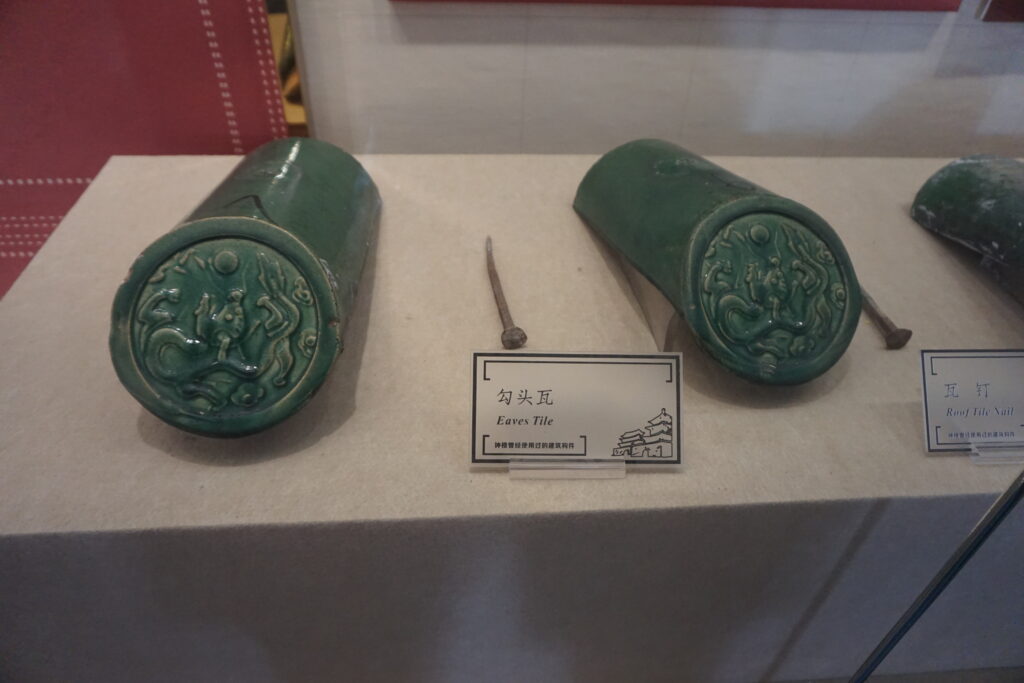
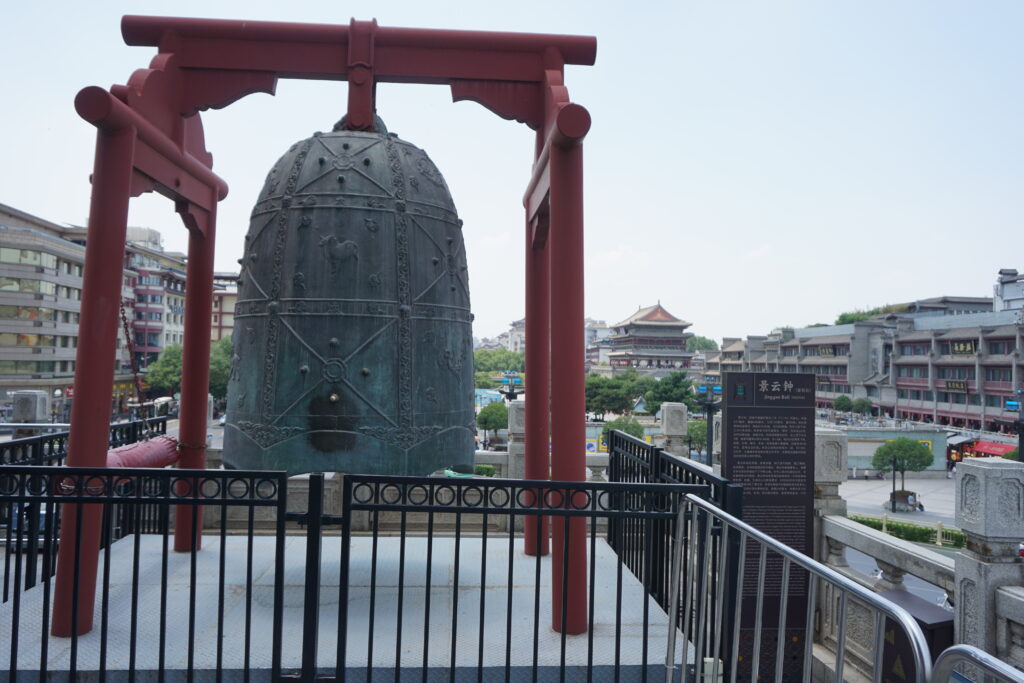
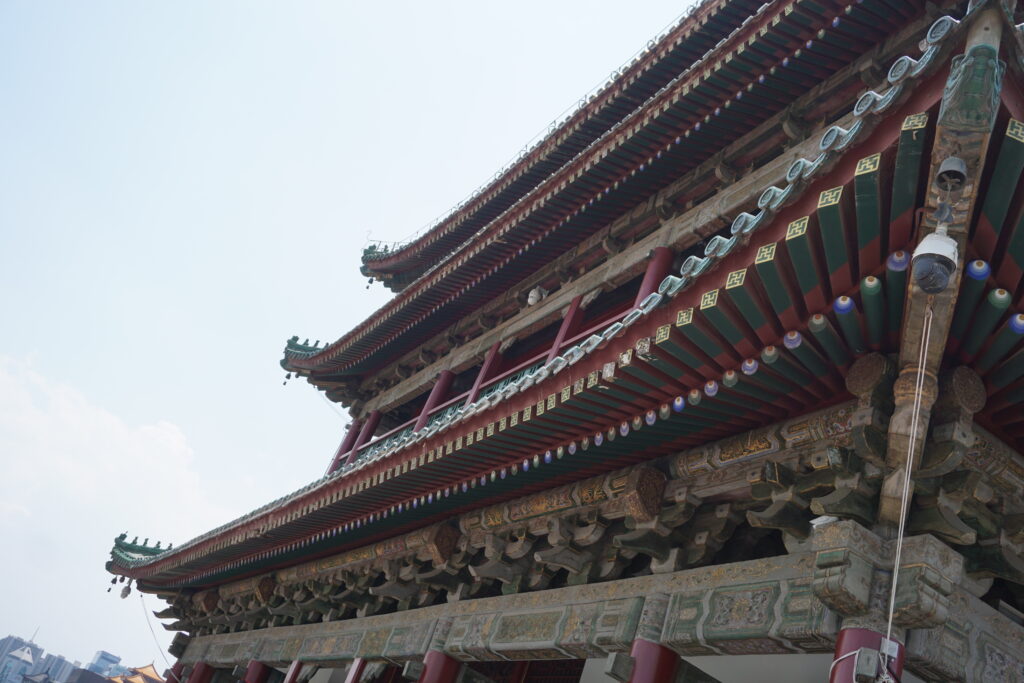
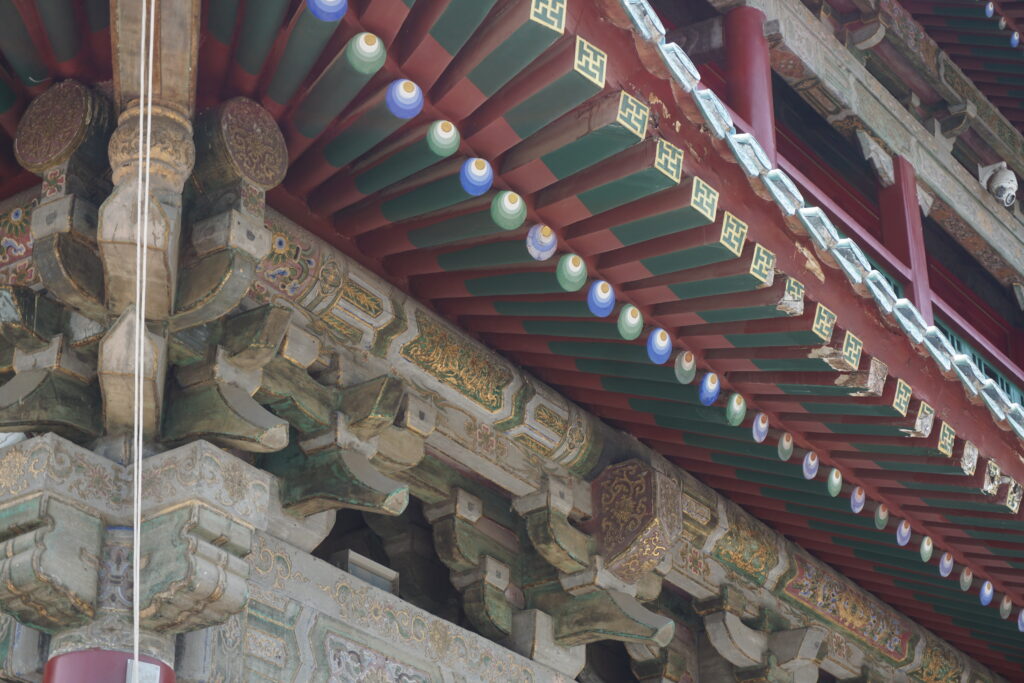
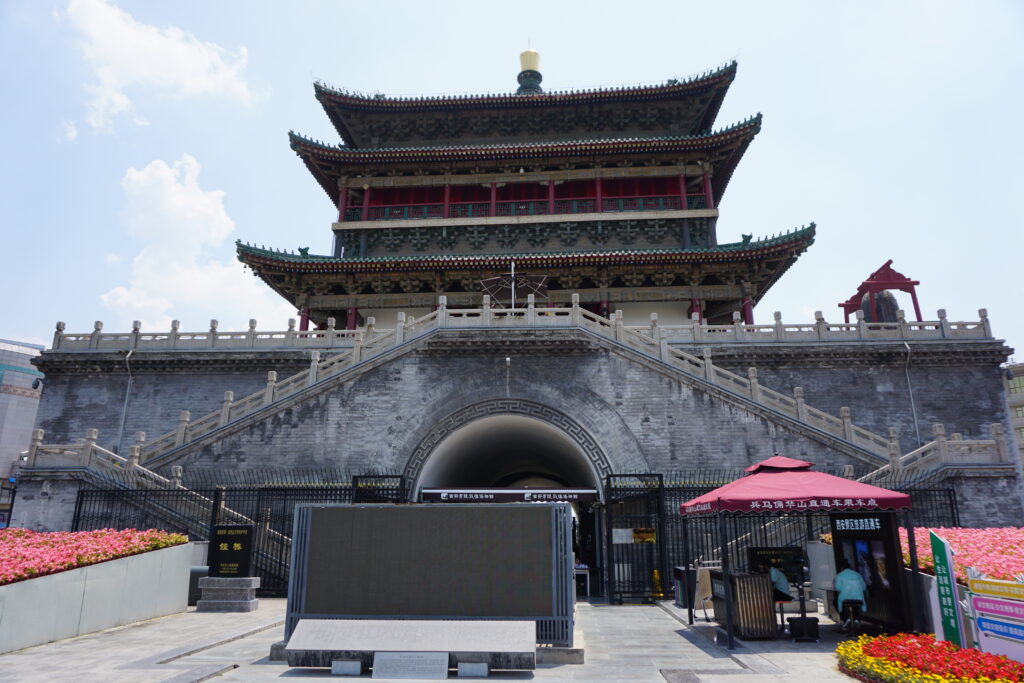
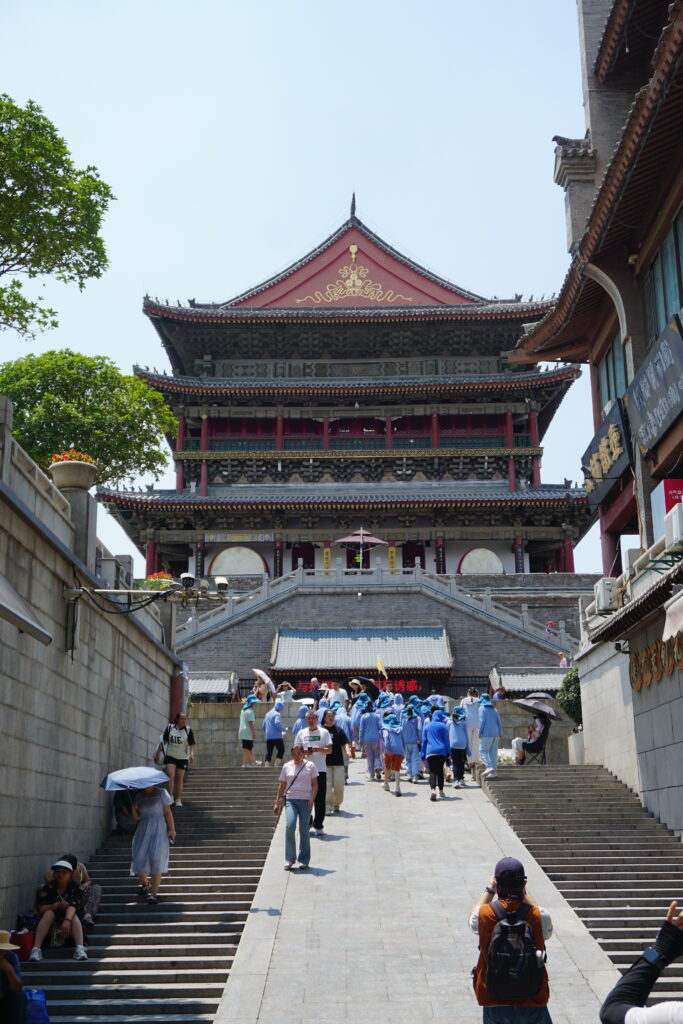
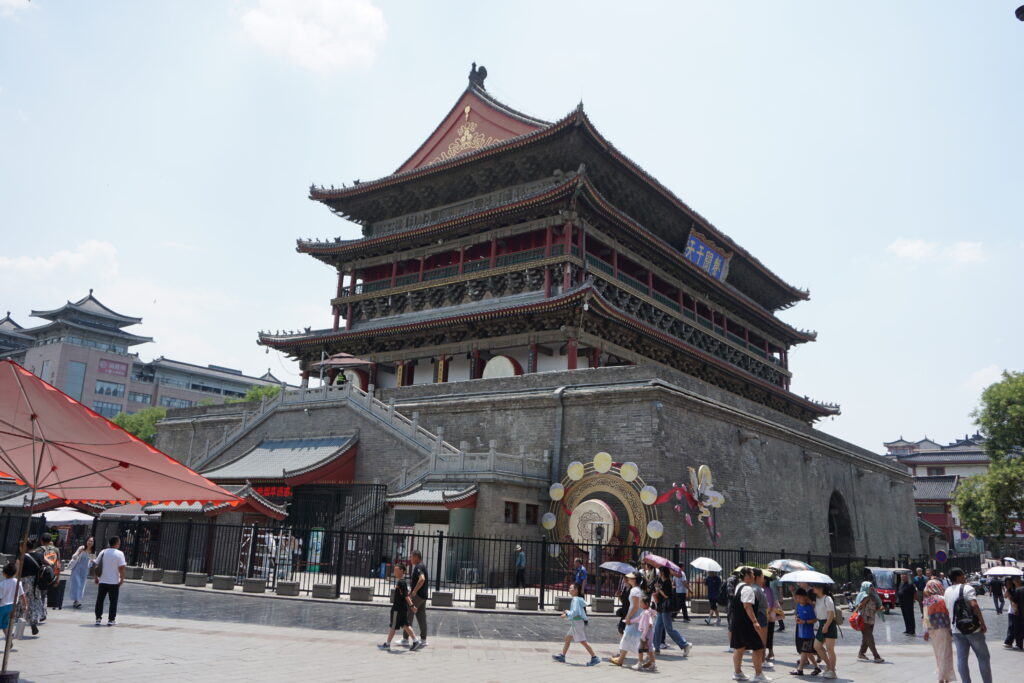
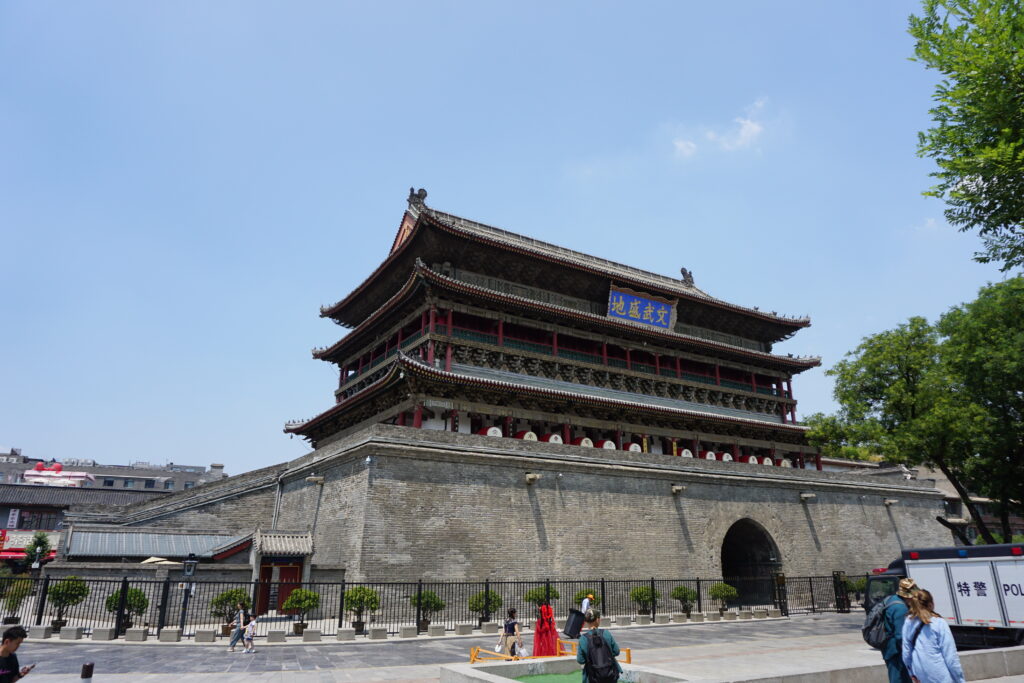
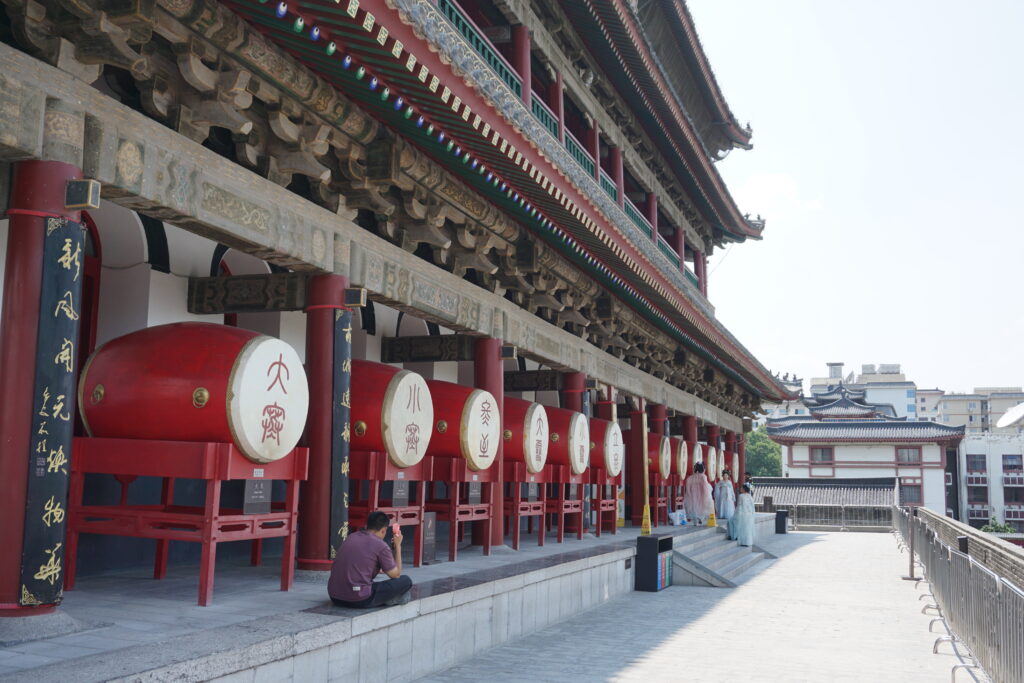
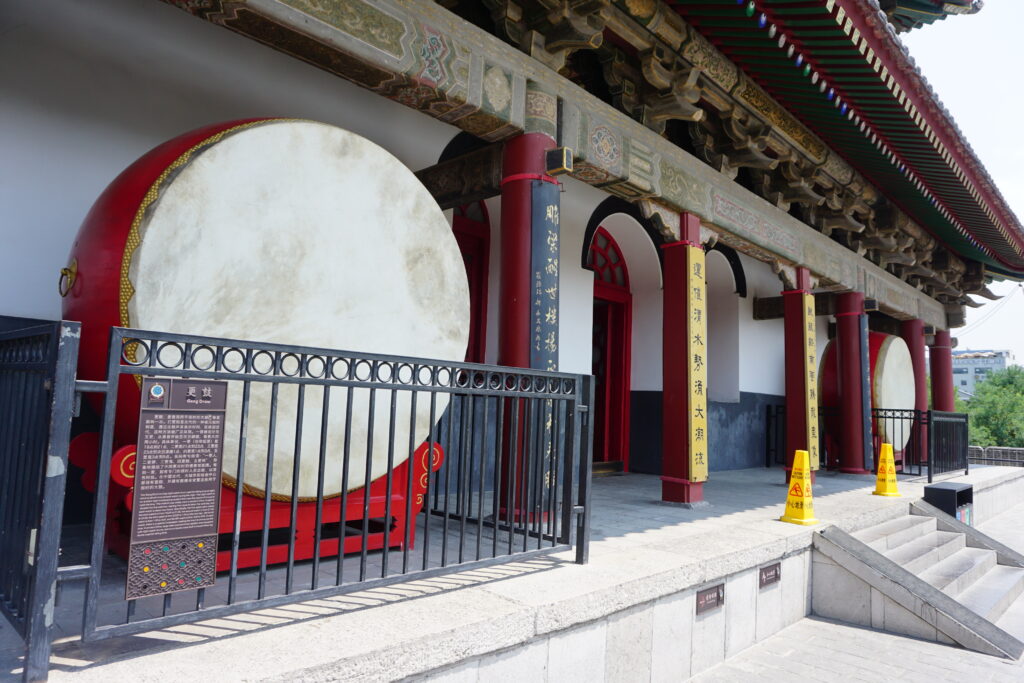
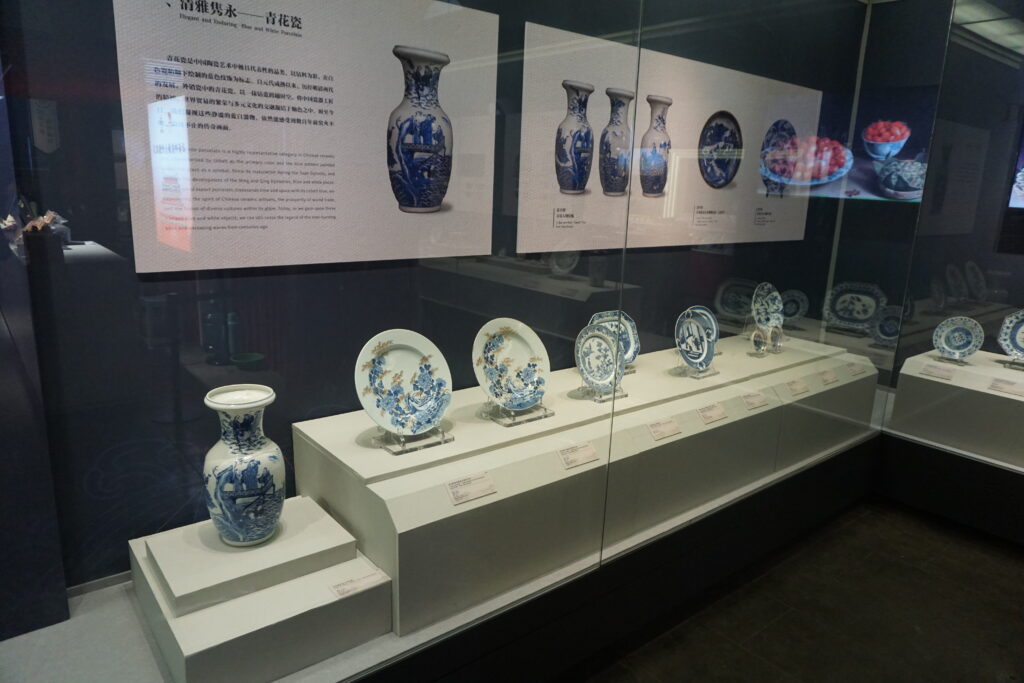
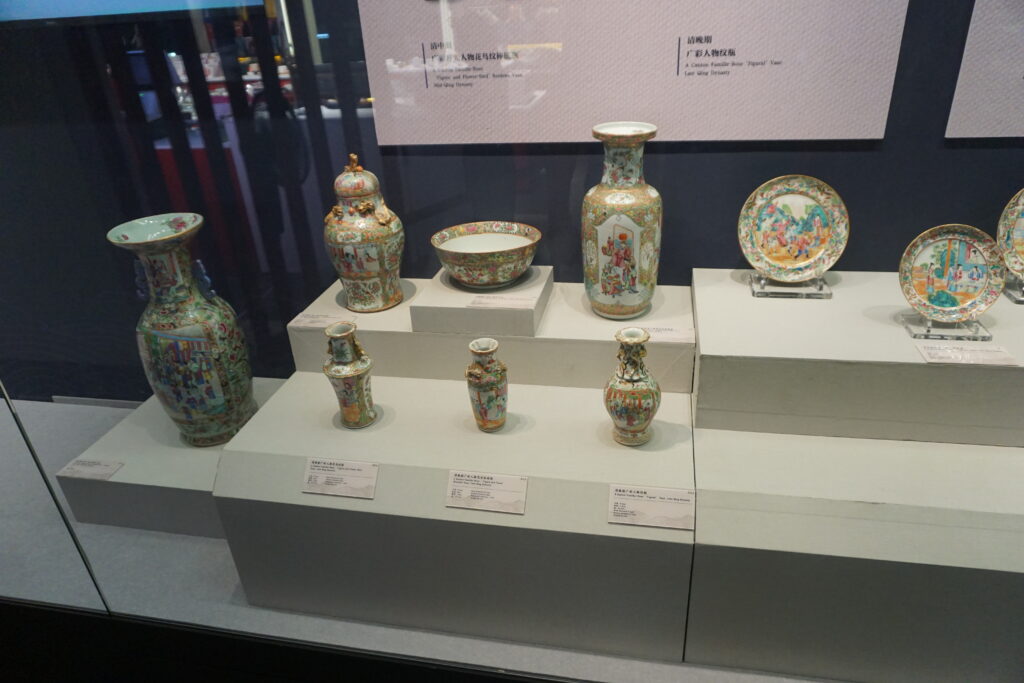
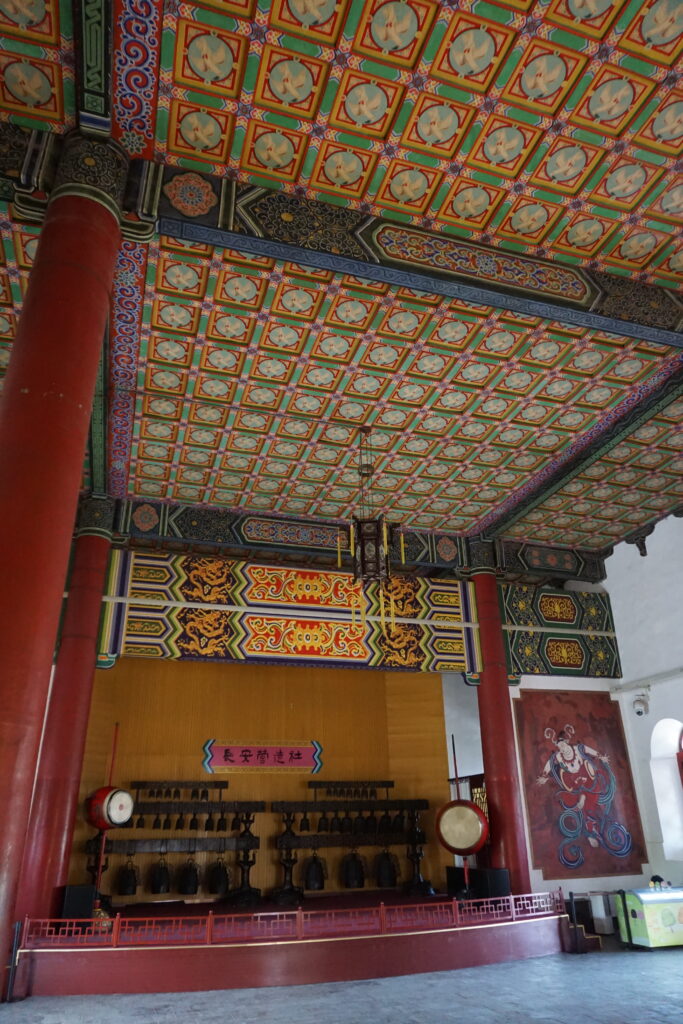
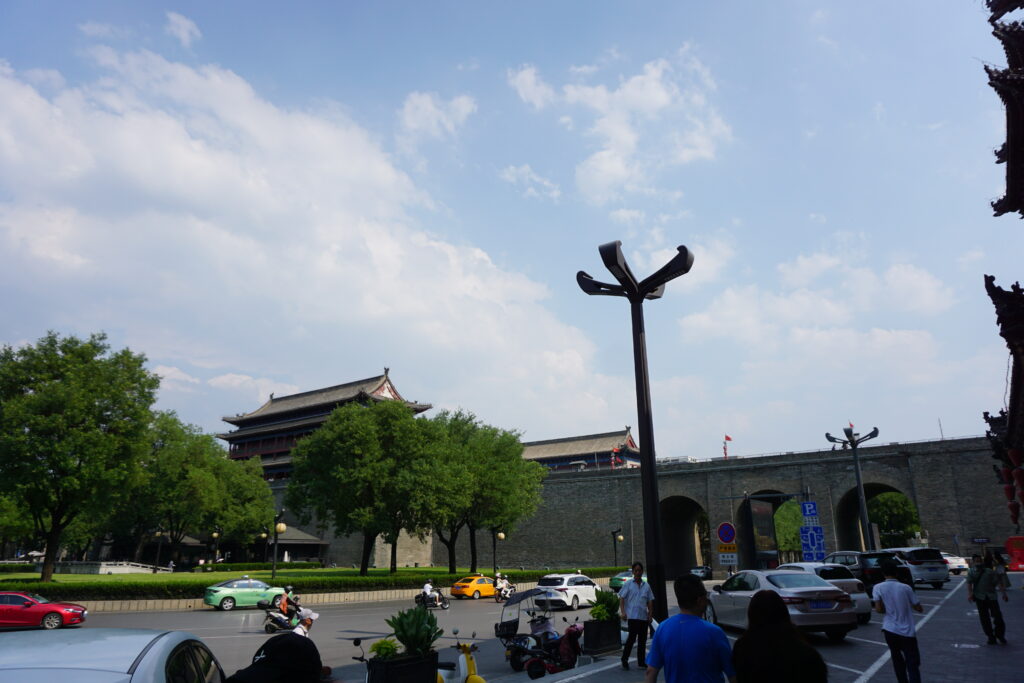
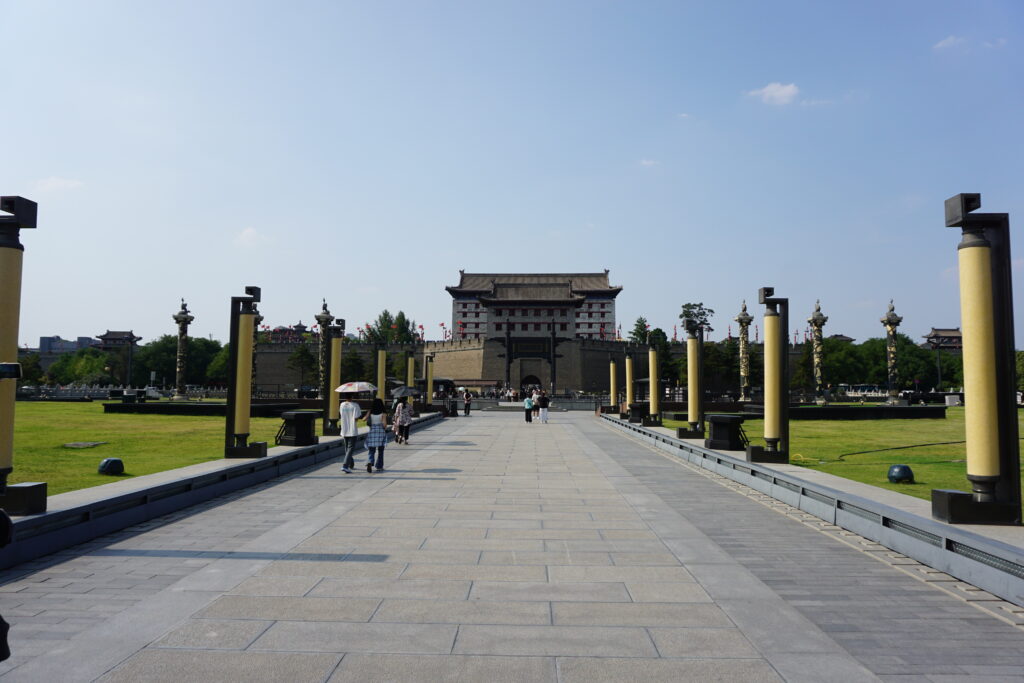
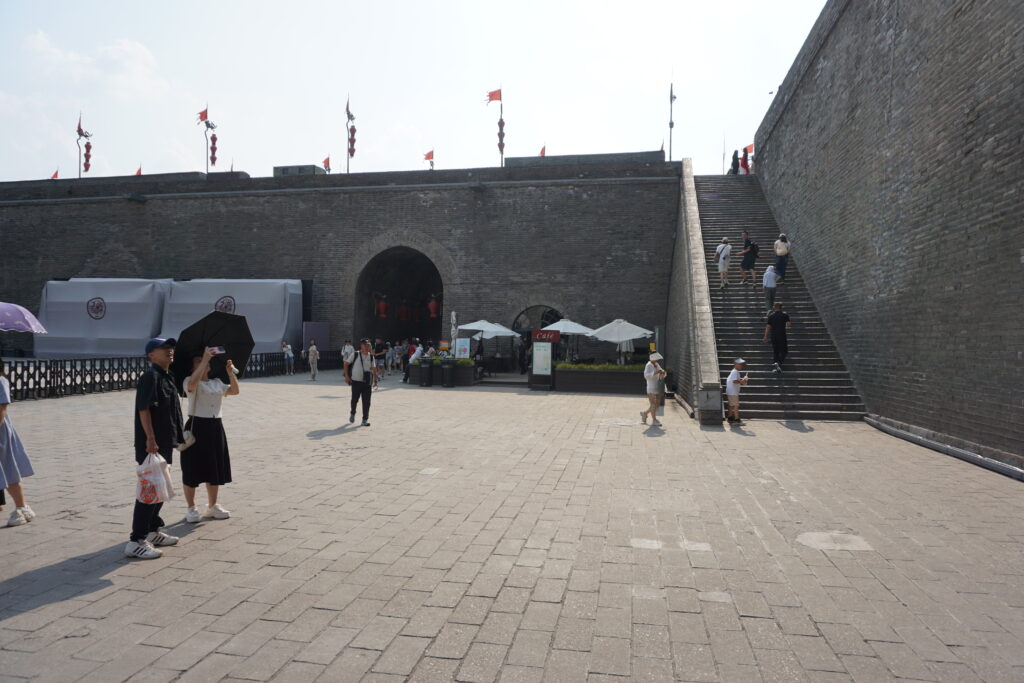
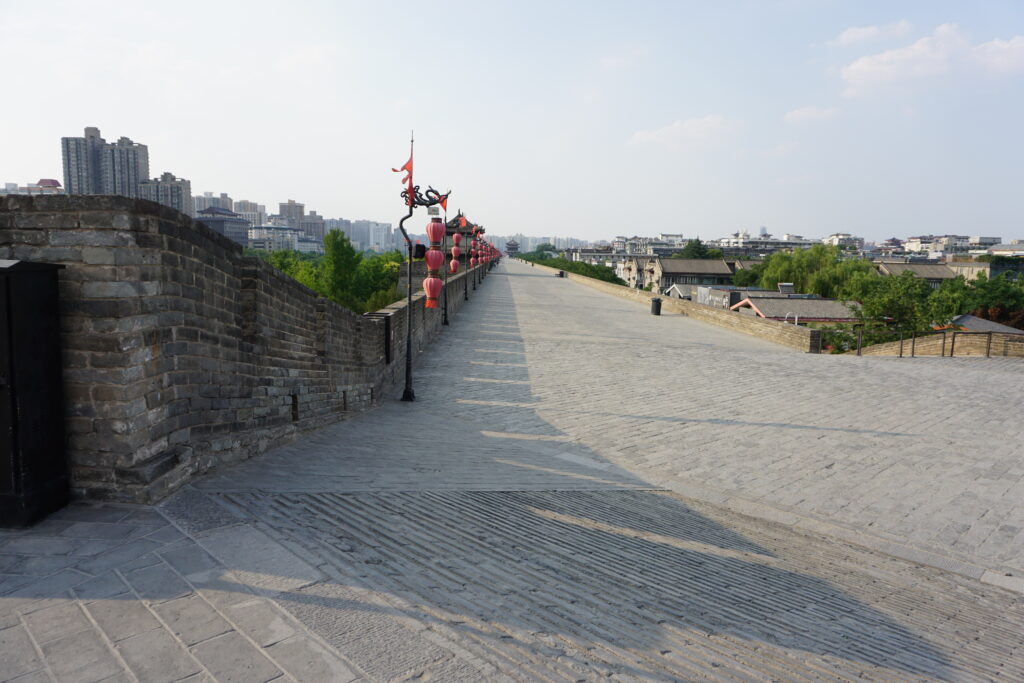
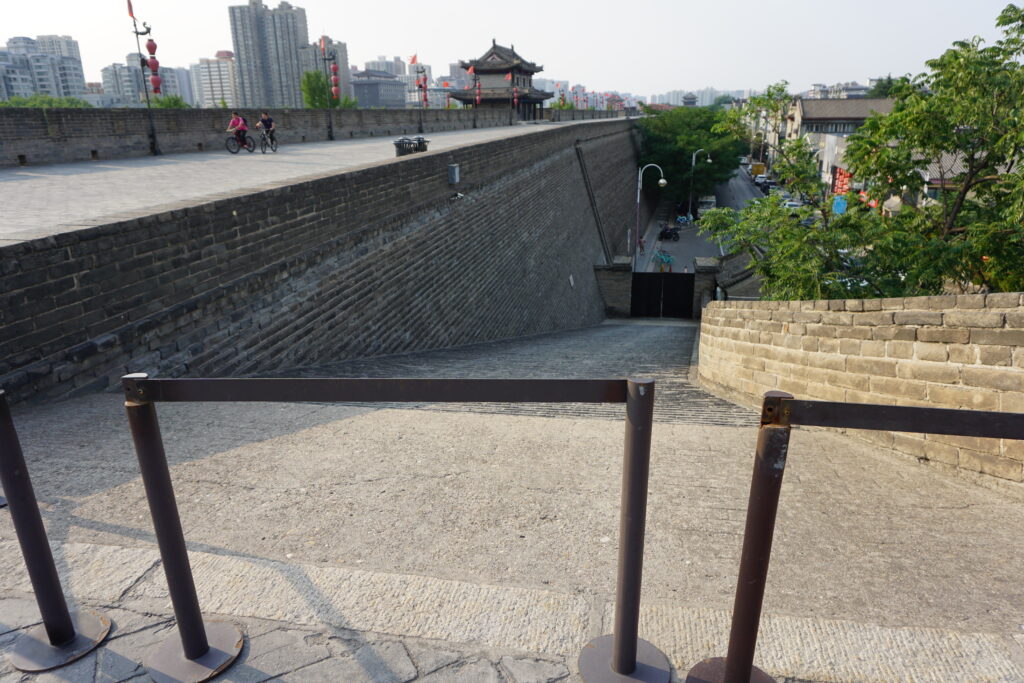
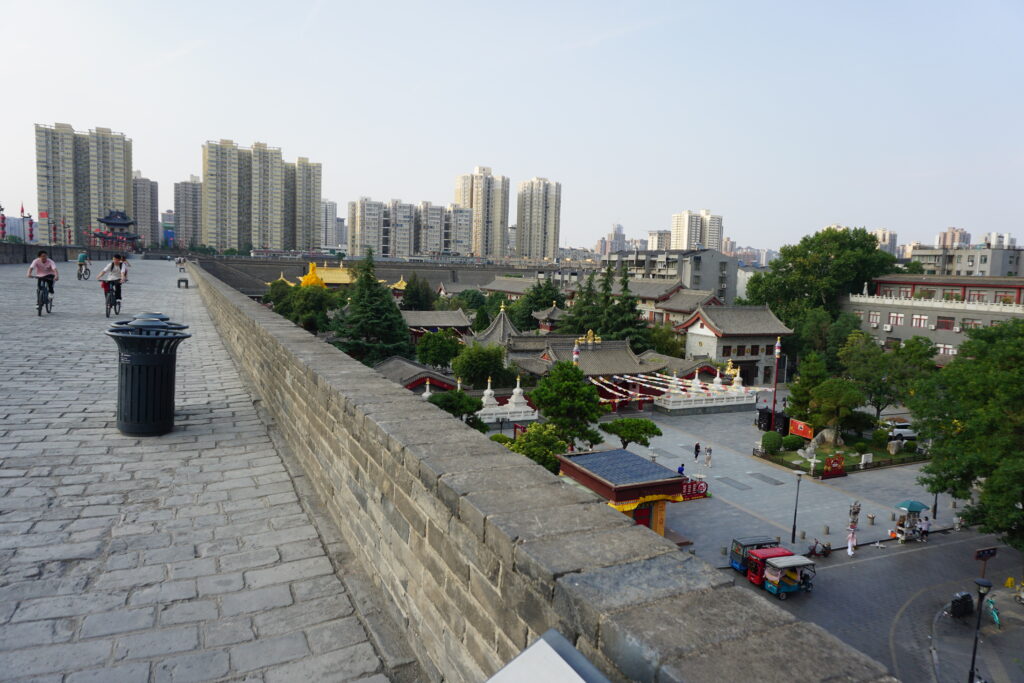

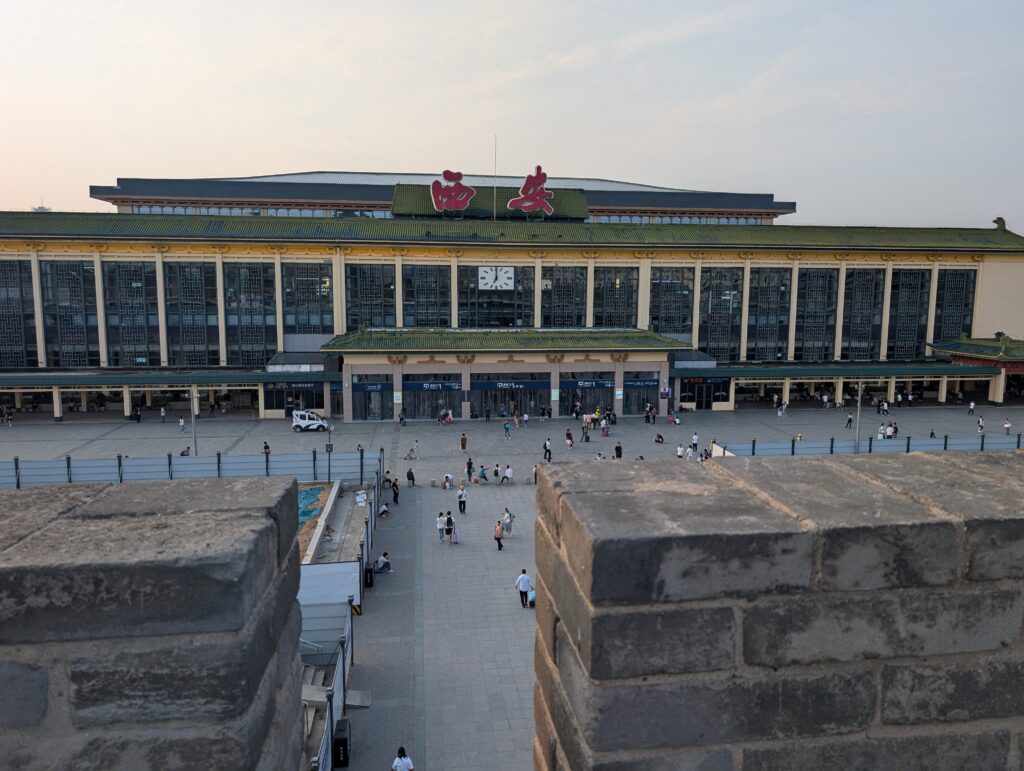
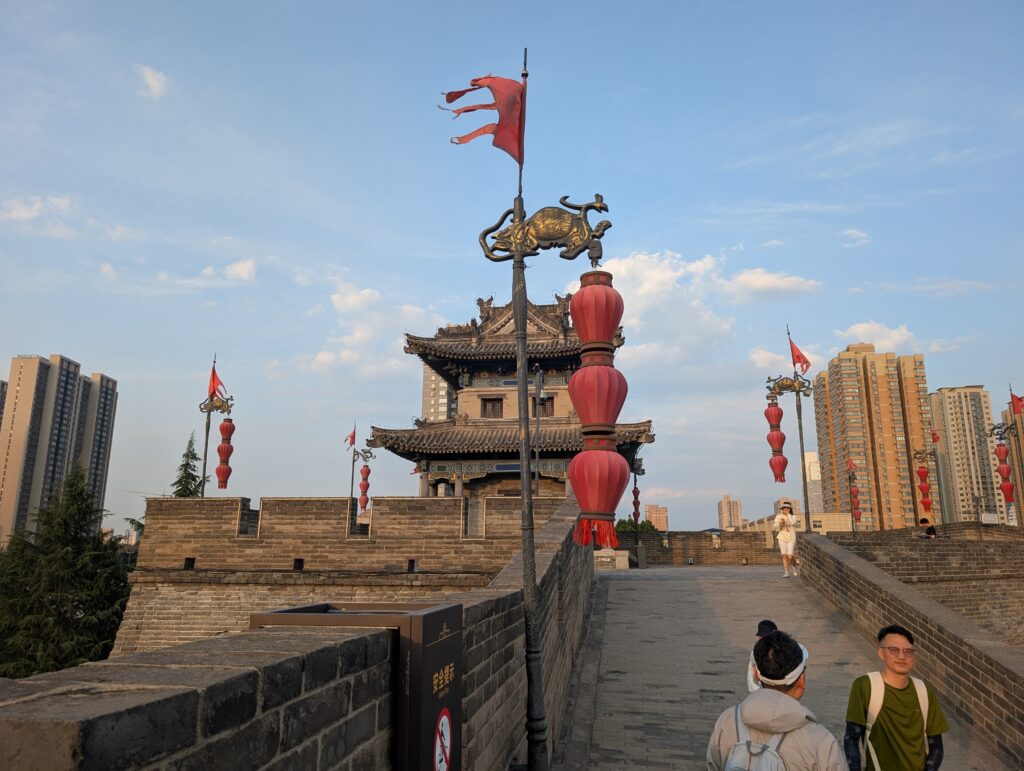
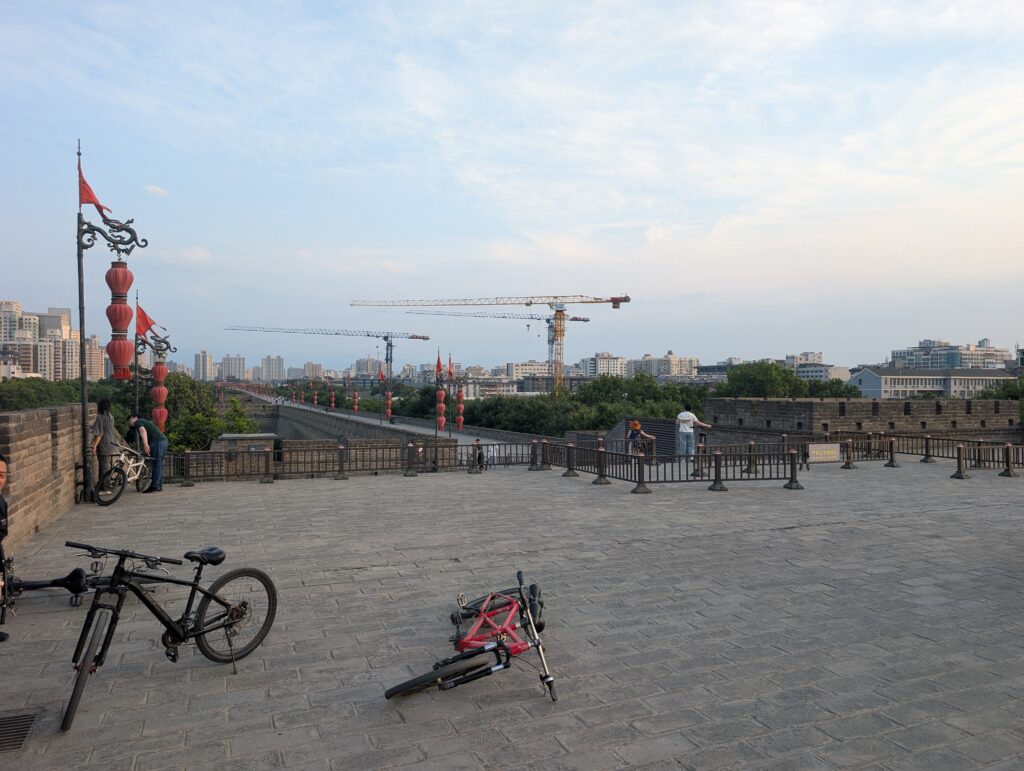
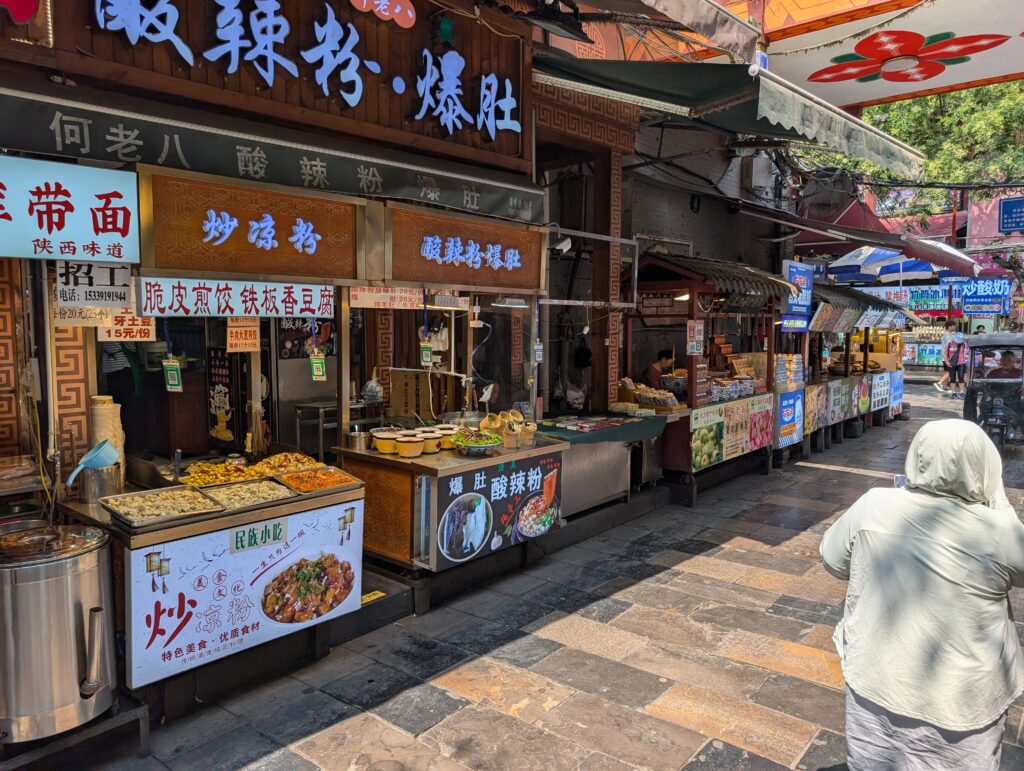
My hostel room was comfortable and dark. I got a late start Monday as a result. I decided to take it a bit easy and explore some sites nearby to my room. I visited a very old bell tower, and a very old drum tower. I paid a 50 yuan combined fee to climb inside both of these structures, though in retrospect, it wasn’t really worth it. The beauty and grandeur of each place could have been fully experienced from the street. There really wasn’t much else to see on the inside. It was interesting to note that to get to some of these sites, you had to take a subway tunnel (without getting a subway) under a busy street, emerging on the other side, or in the case of the bell tower, inside a special city block set aside just for the structure.
I had heard that Xi’an had a special Muslim quarter that served delicious food, unique to that area – a blend of Arab and Chinese dishes. This part of town was also quite near my lodging, so I walked through it, looking for something to eat. There were lamb skewers, special cakes, soft ice cream served in huge bamboo tubes, and a special kind of lamb soup you could sop up with pita bread. I tried a few of these Monday, and saved some for later.
I went back out to visit one other historic site Monday evening. Xi’an has an intact Tang era city wall. The wall is a 14 kilometer rectangle, about 20 meters across. The touristy thing to do is to climb up onto the wall after you’ve paid your admission and rent a bike to make the ride. It was an interesting excursion. There are placards around the wall you can stop to read, explaining what historic and modern buildings you are looking at. Although it was a bit warm, there was no humidity. This was the first arid day I had experienced since leaving California. I got a light sunburn. One of the Chinese girls working at my hostel that evening commented that I had raccoon eyes.
The bike itself left much to be desired. Forty-five yuan gets you use of the bike for three hours. You must also put down a 100 yuan deposit. I wondered to myself how 100 yuan (a little less than $14 U.S.) could deter someone from stealing a bike. After I saw the bike, I understood. It couldn’t have been worth $14. The gears did not change. Cables were falling off of it. One of the chain rings had a piece broken off of it. The rear tire was nearly flat, and no one had any means of adding air. I can’t imagine it would have been comfortably large enough for someone who was 5’6”, let alone 6’6”. It was all I could do to read the placards and get the thing back in three hours. That’s a pretty lousy time for an eight mile ride, but I had fun with it.
(Continued)
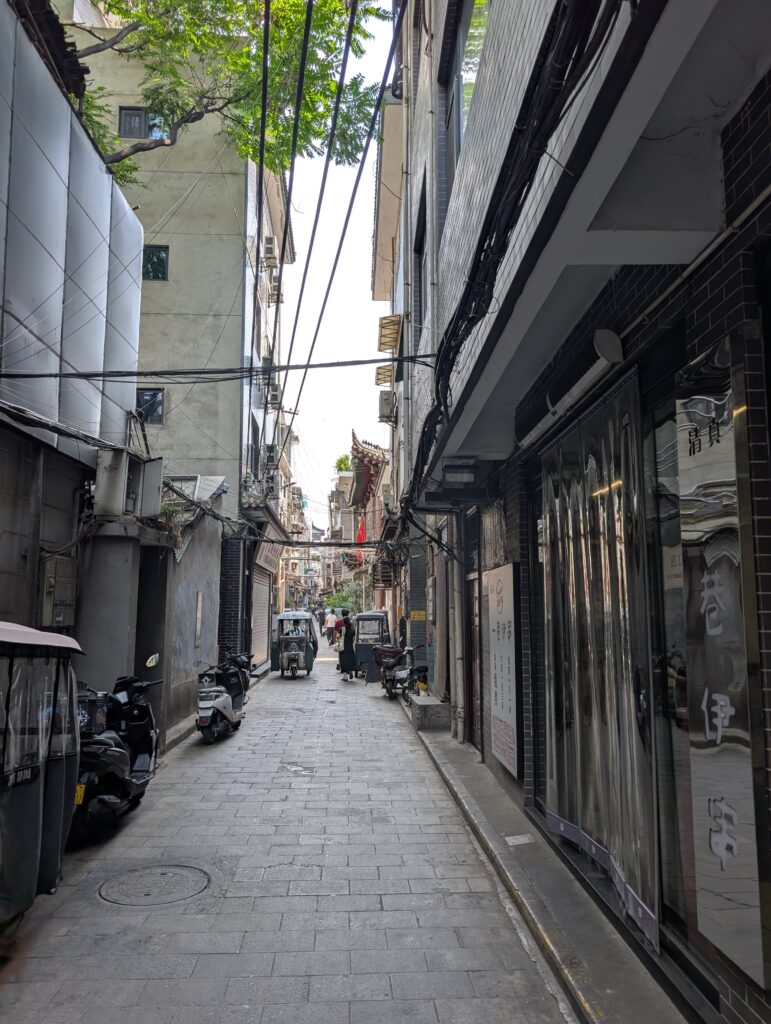
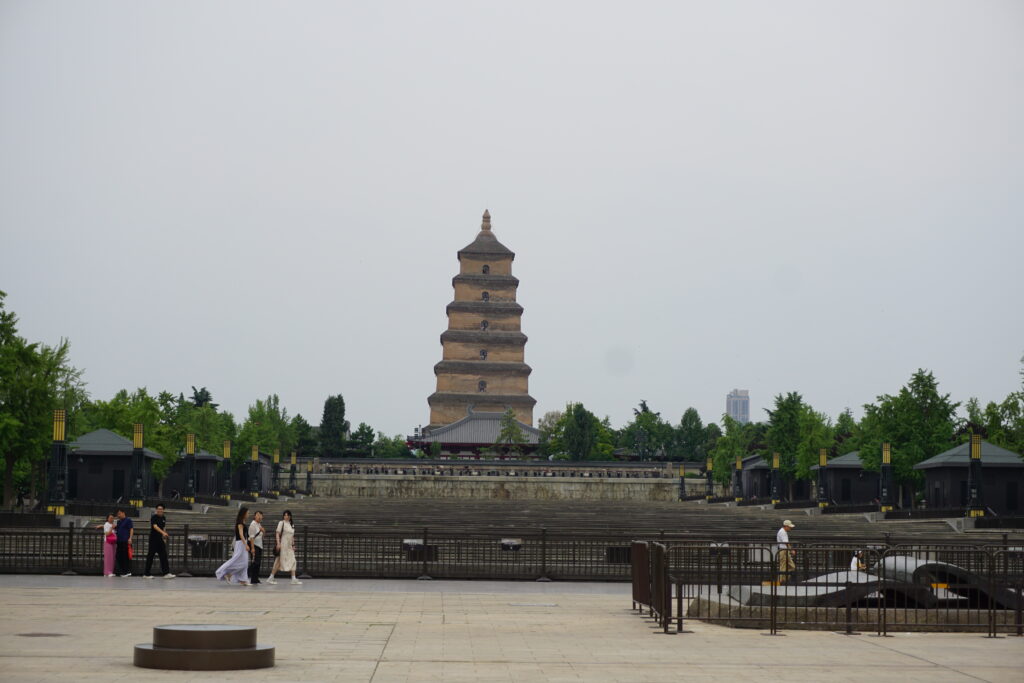
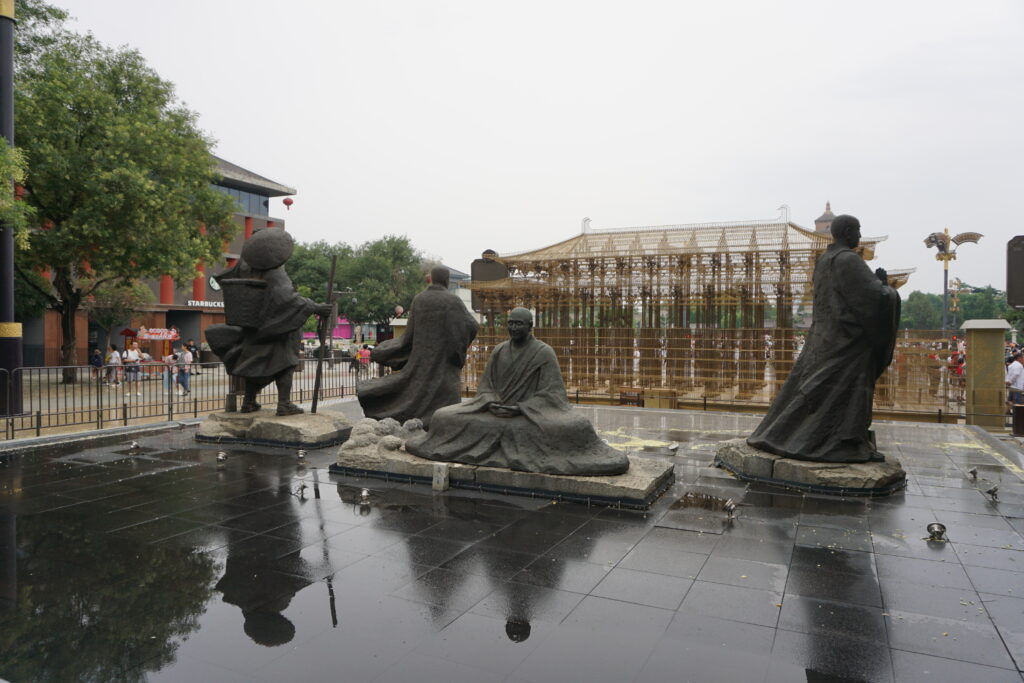
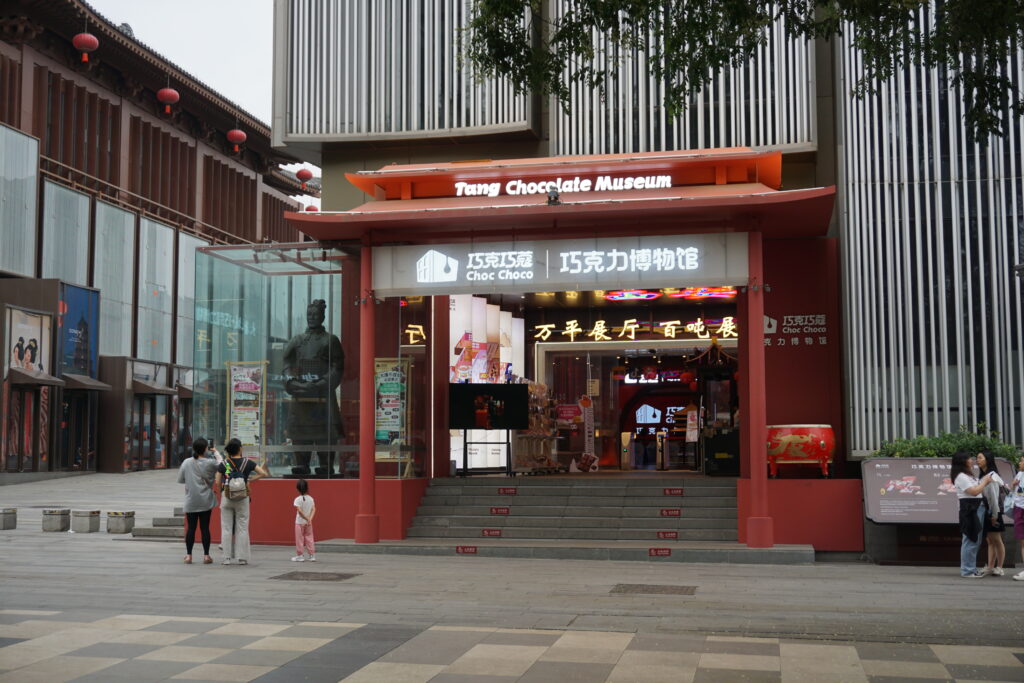
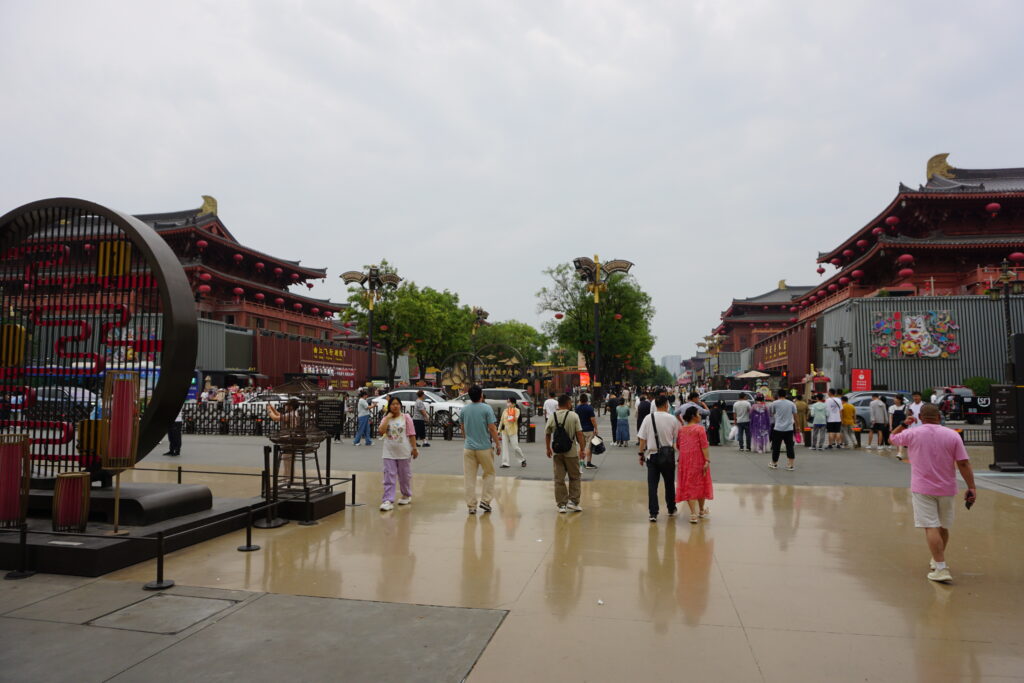
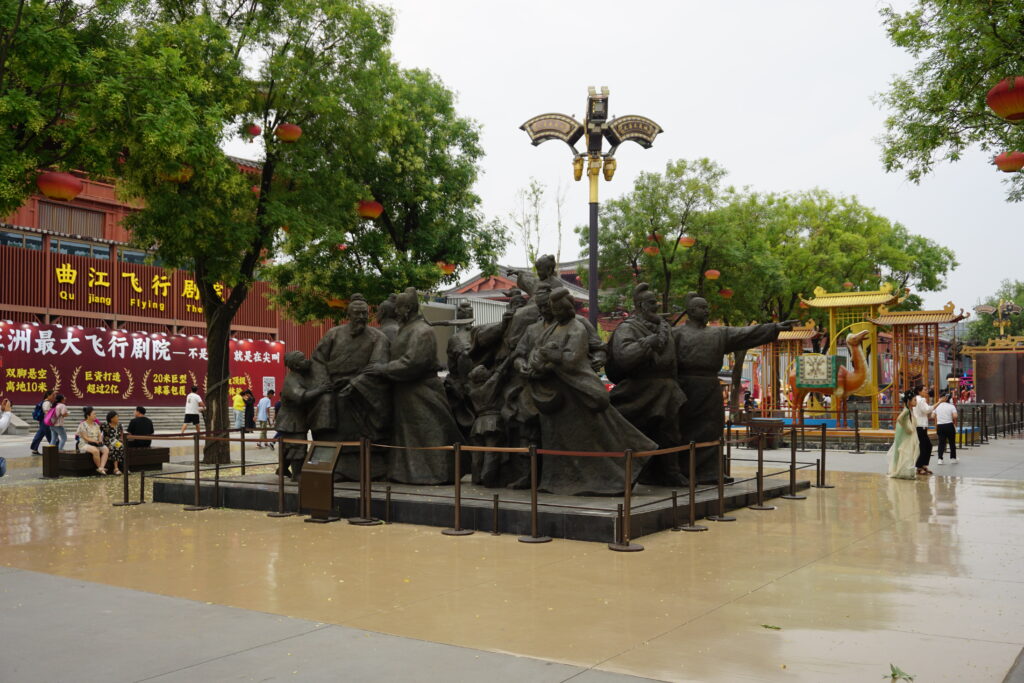
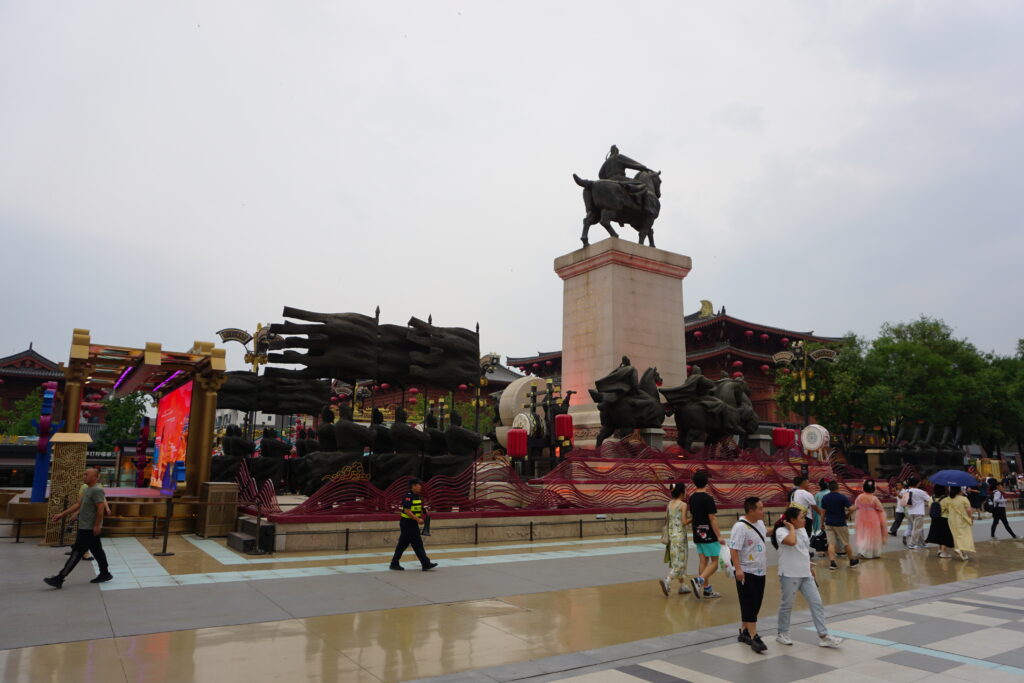
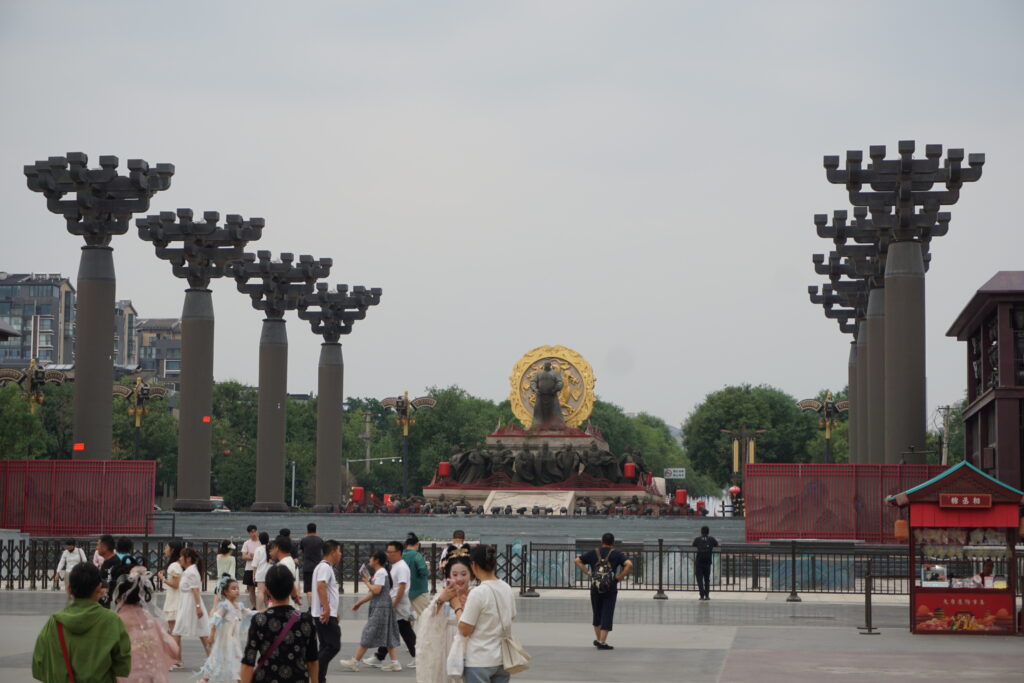
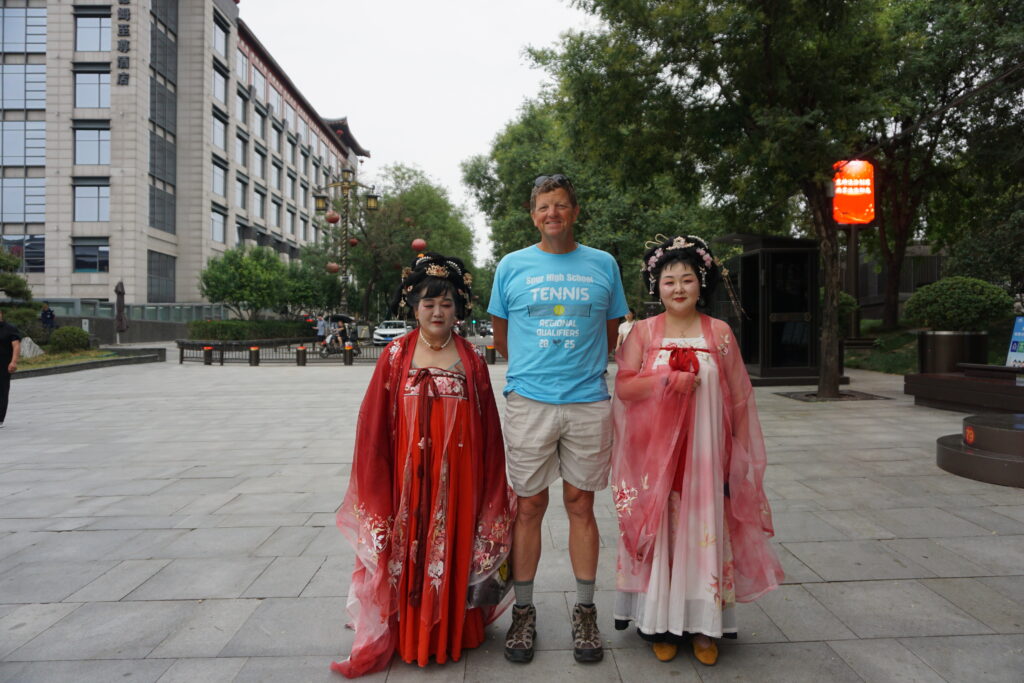
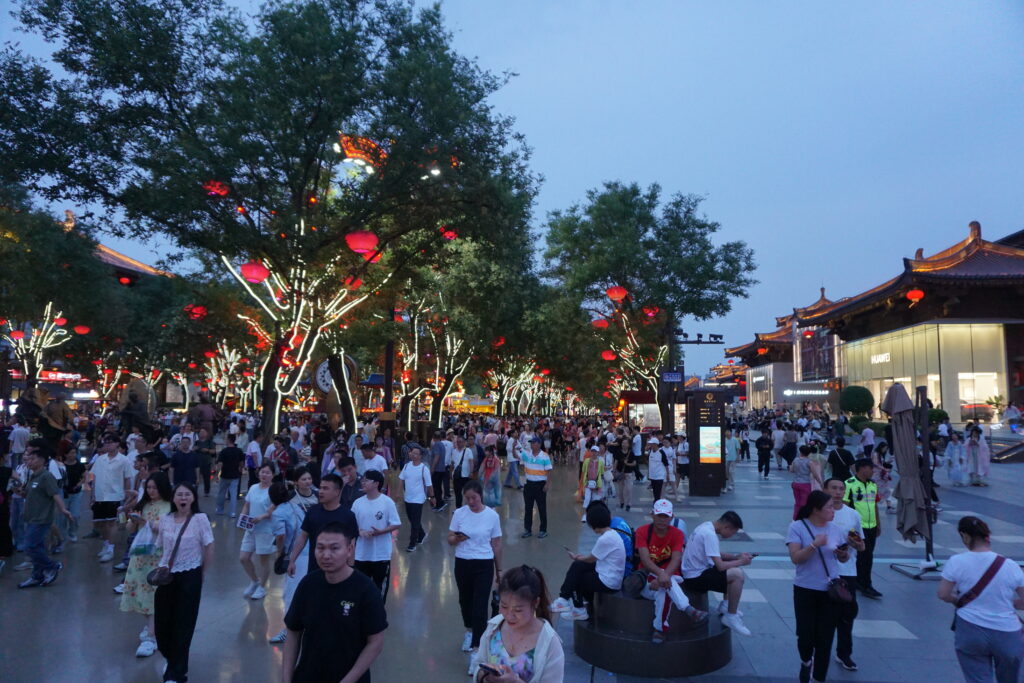
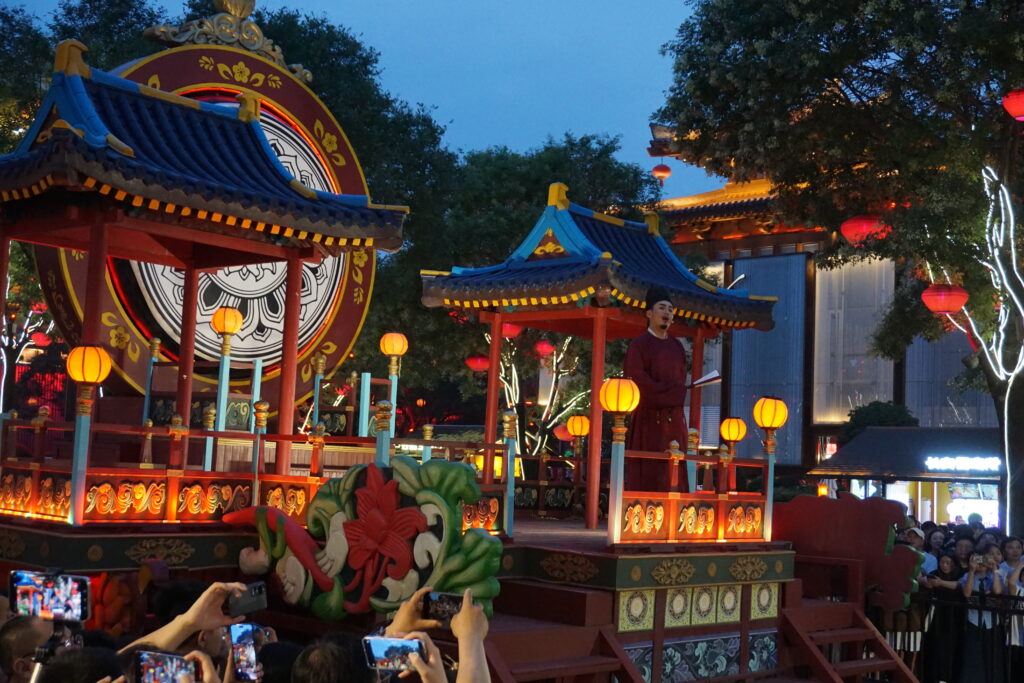
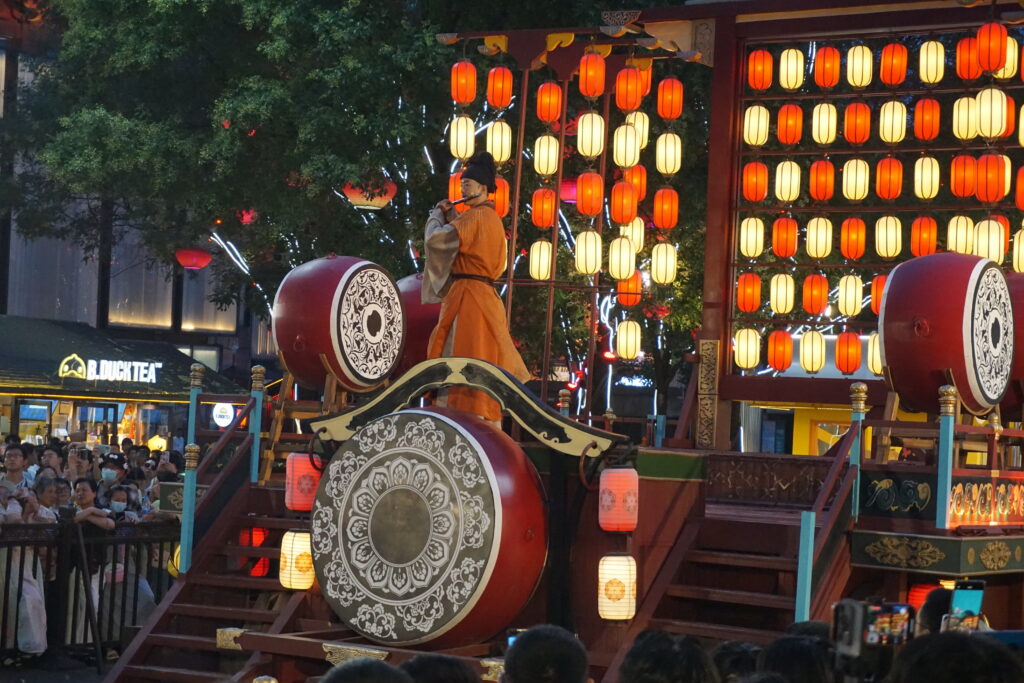
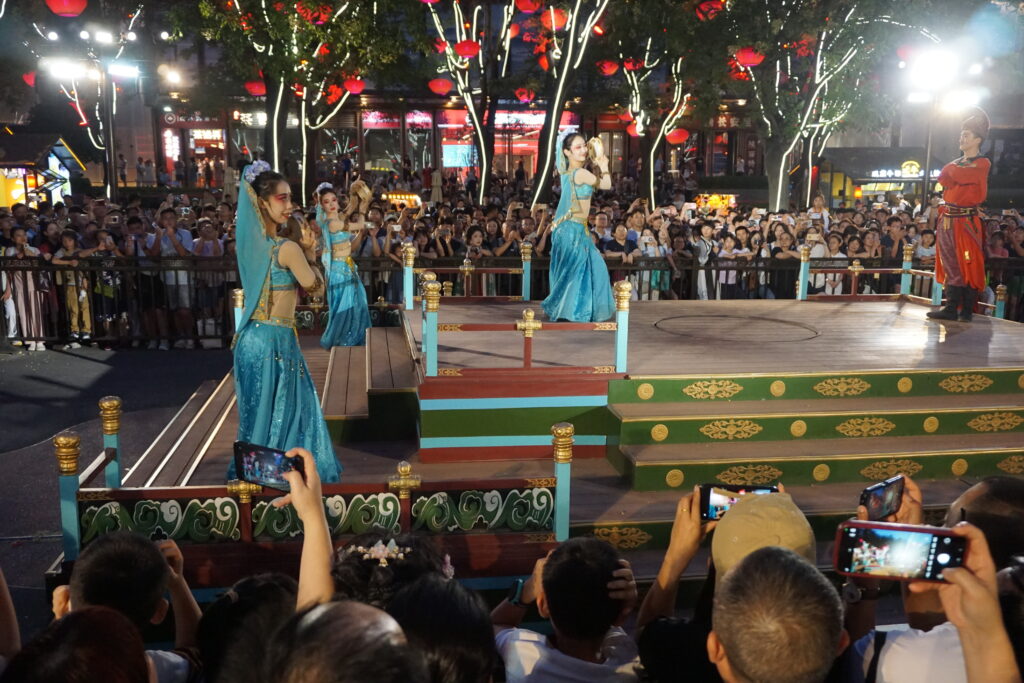
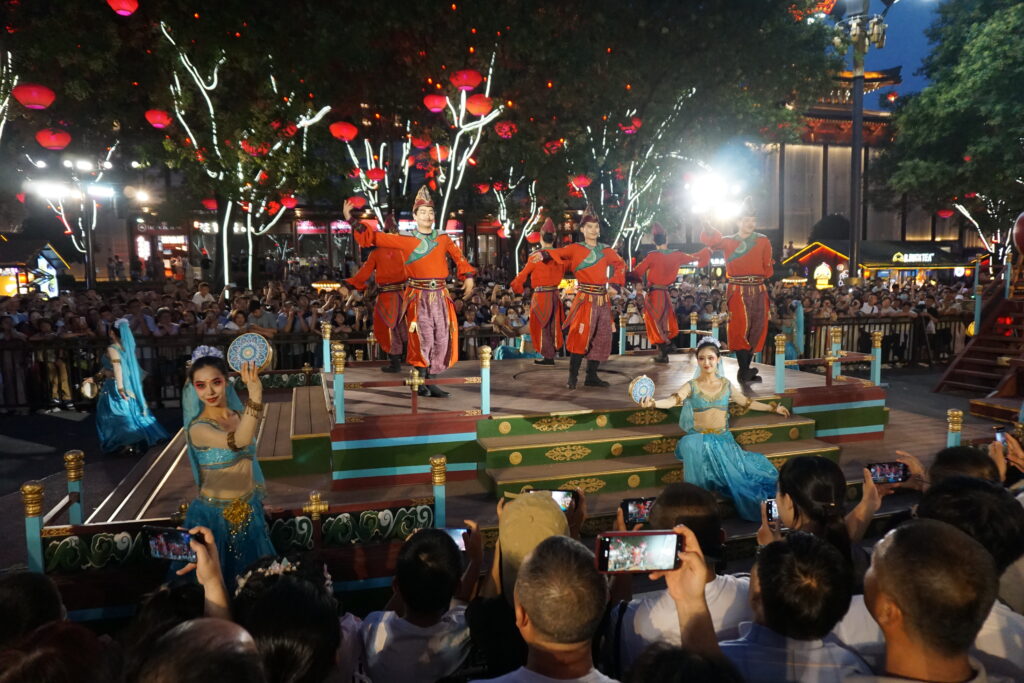
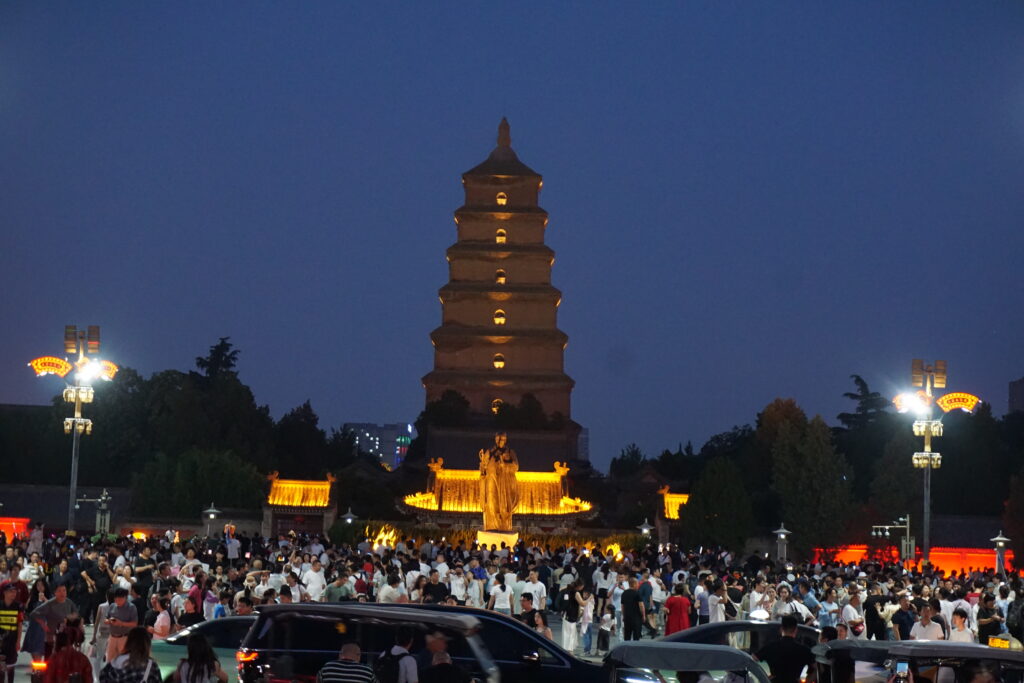
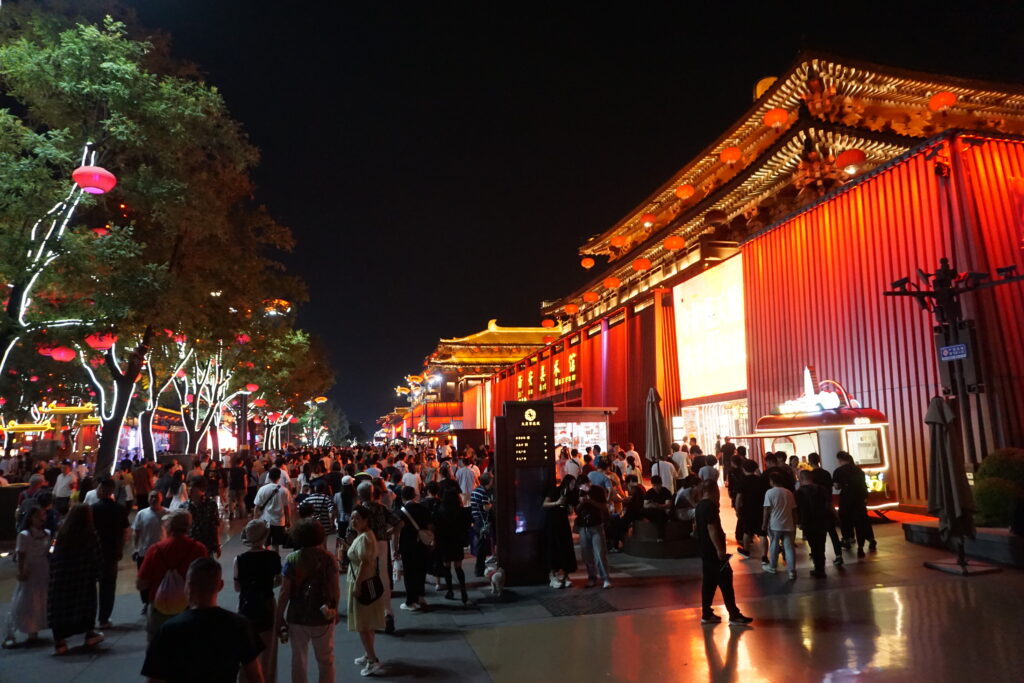
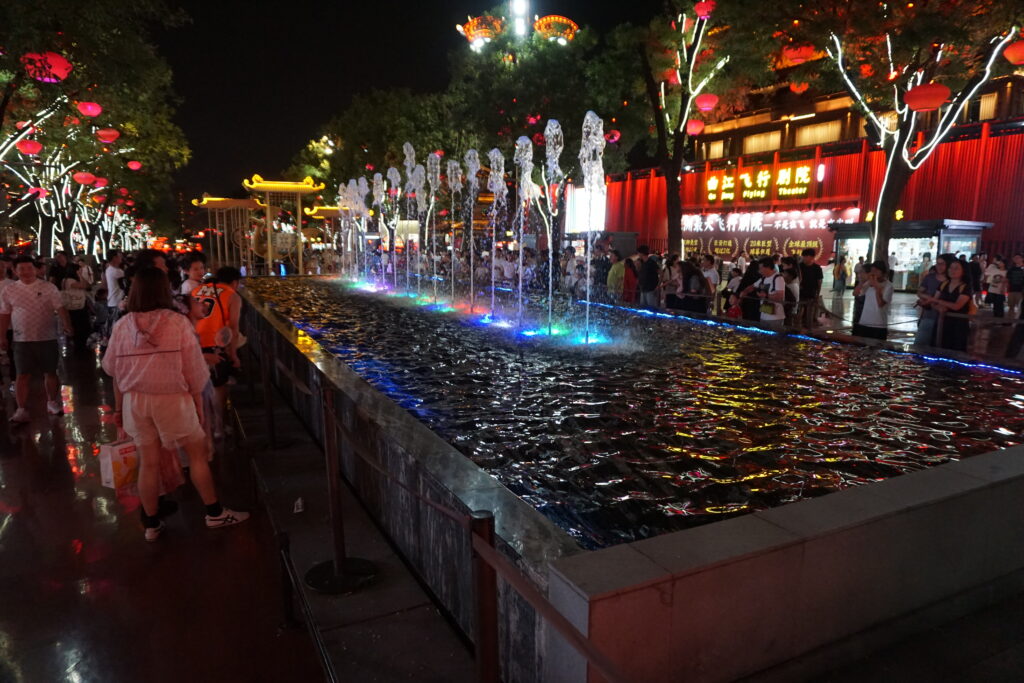
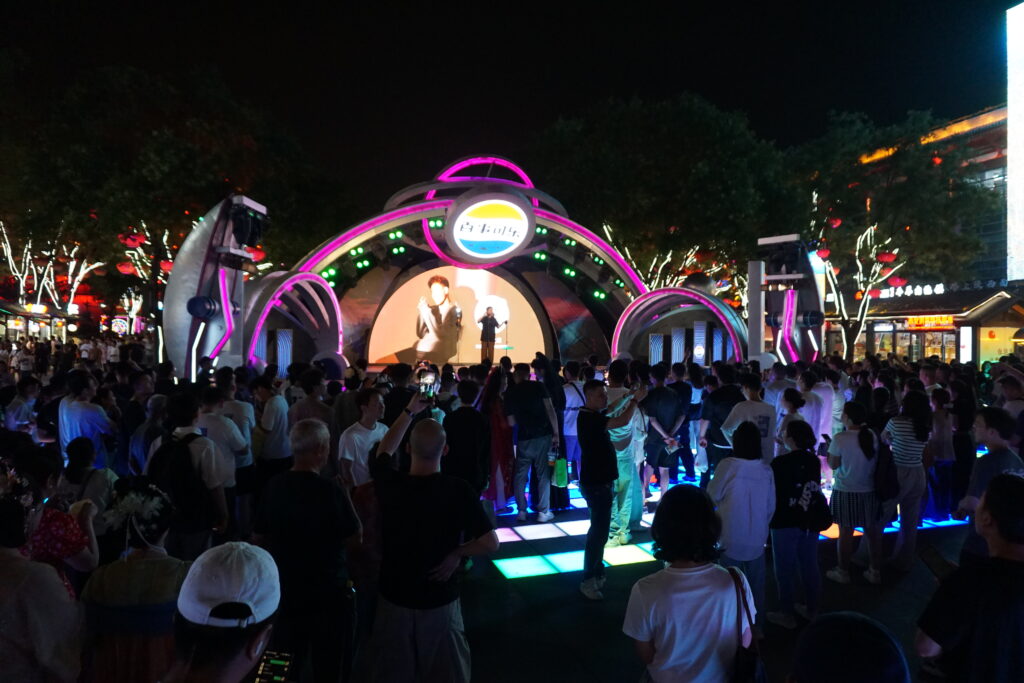
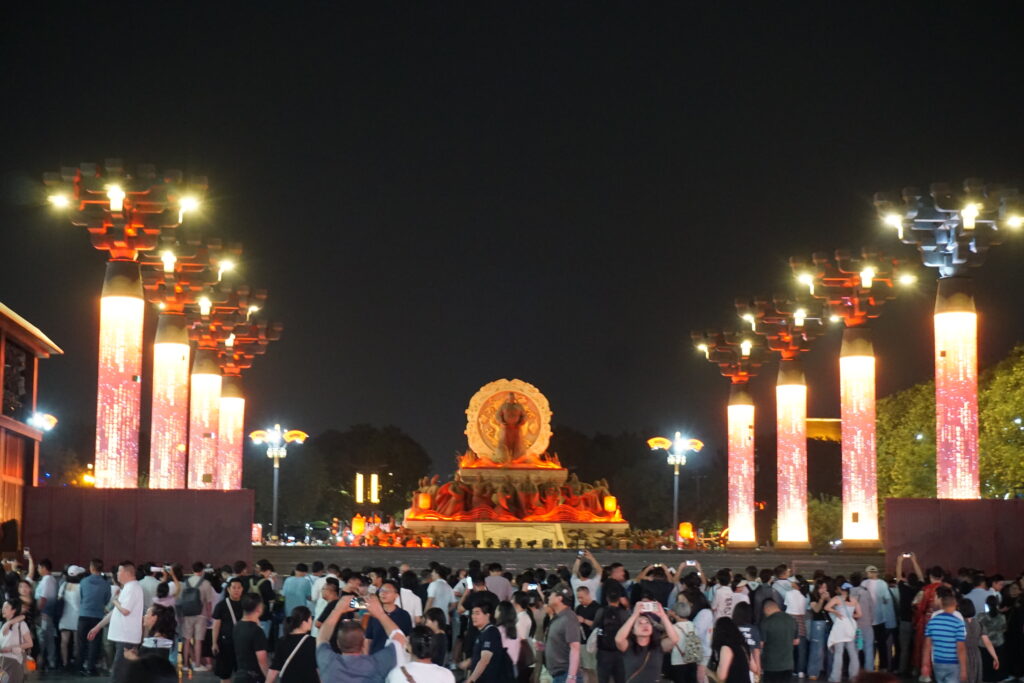
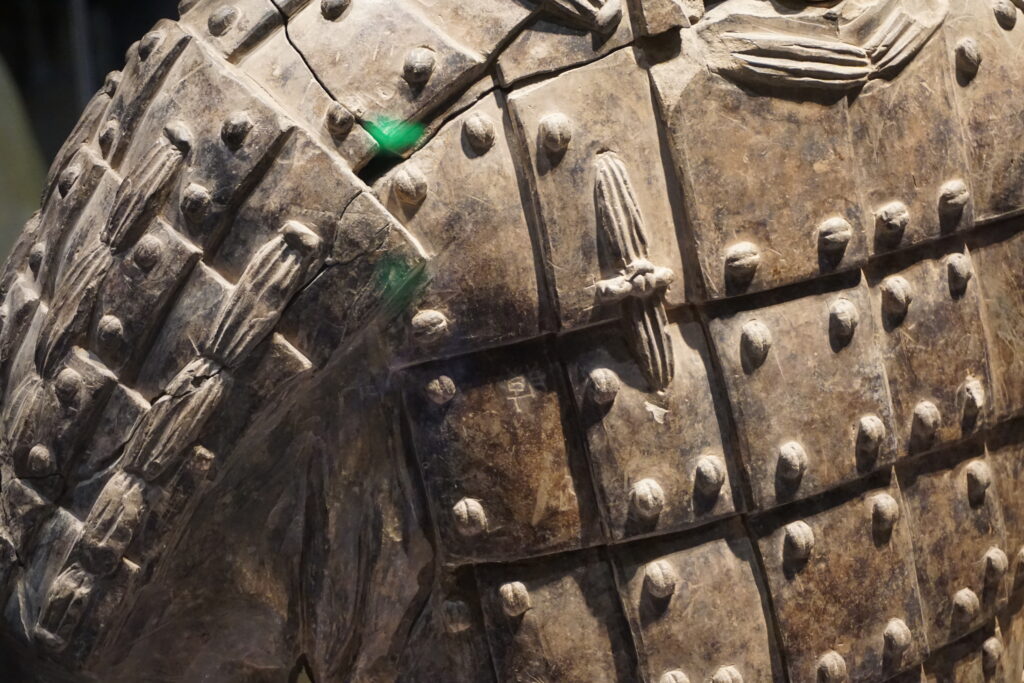
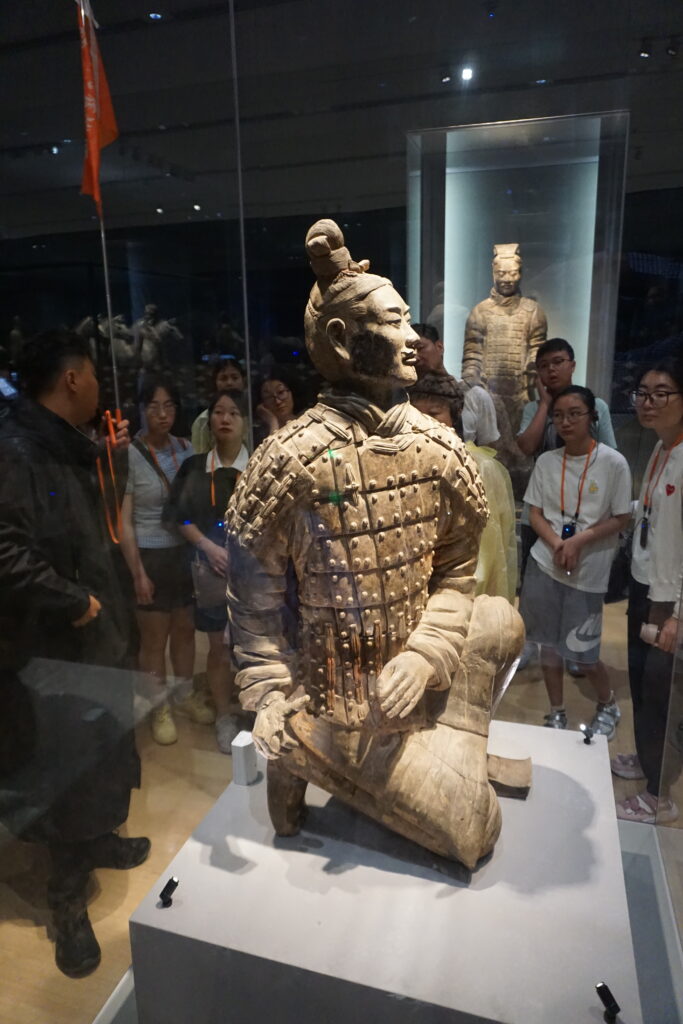
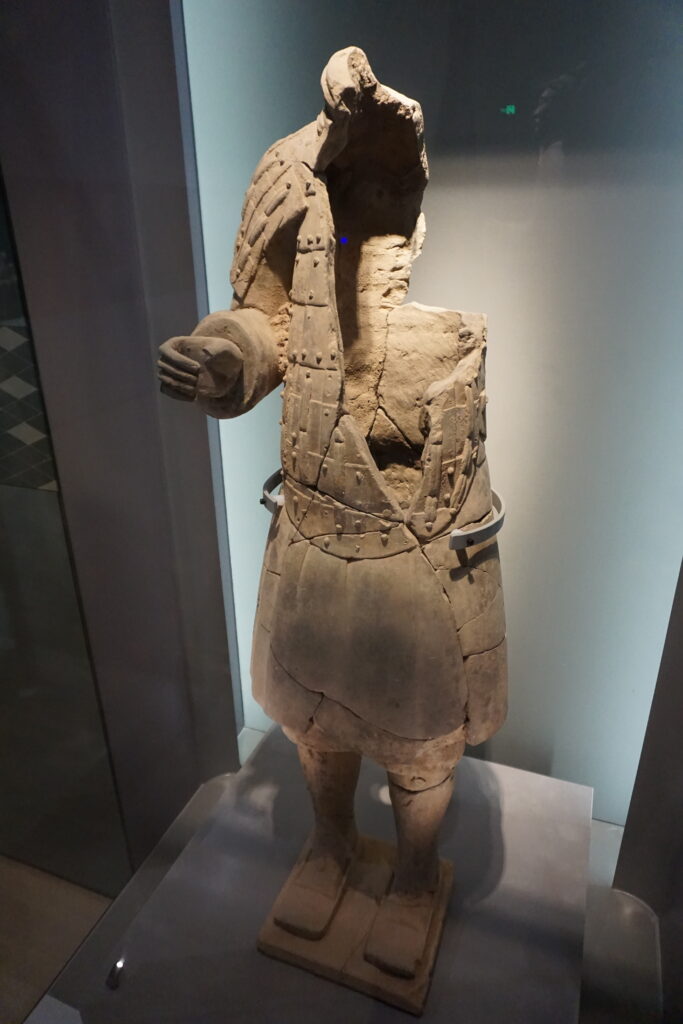
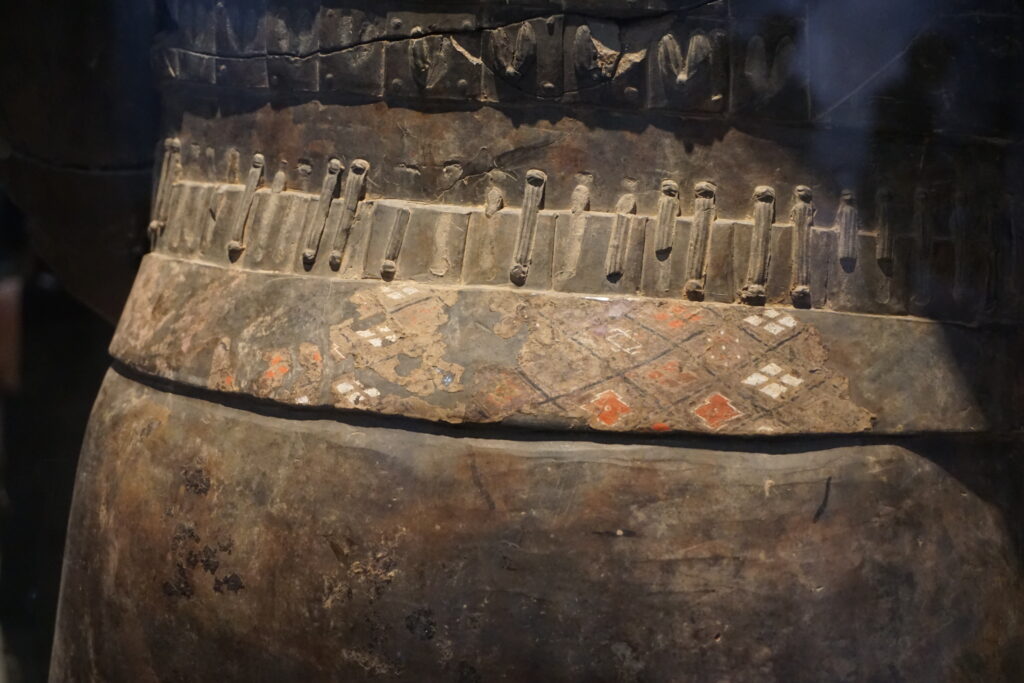
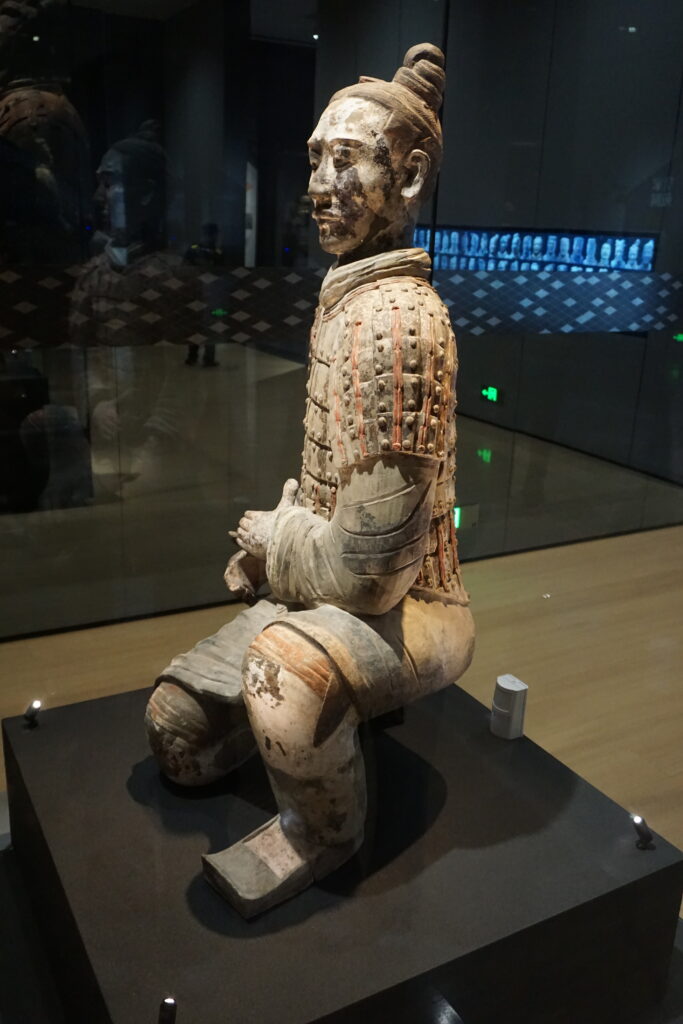
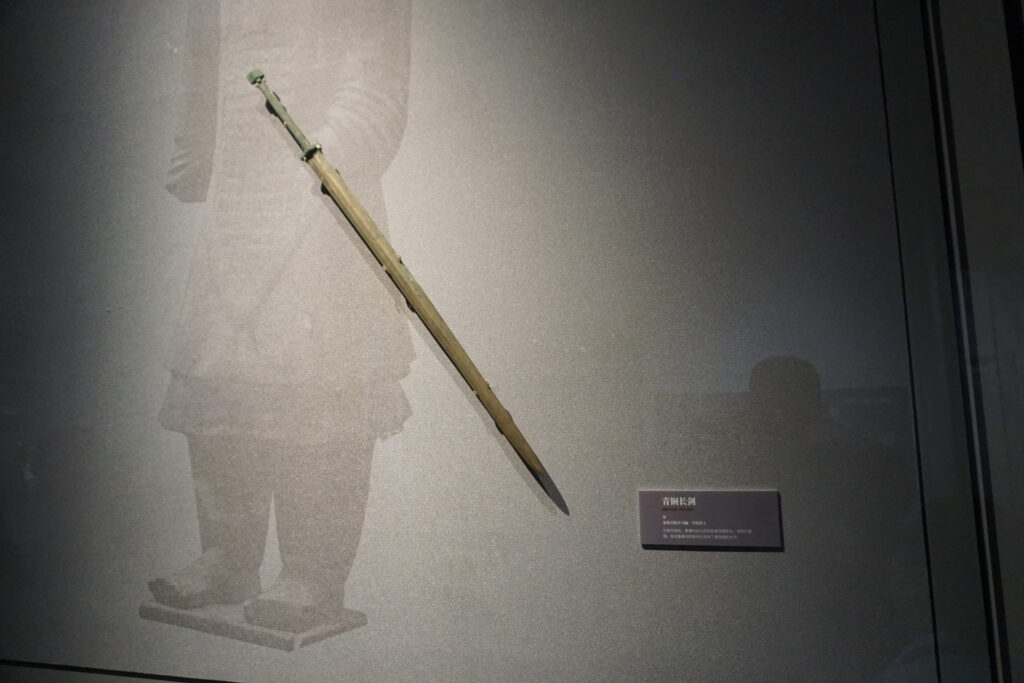
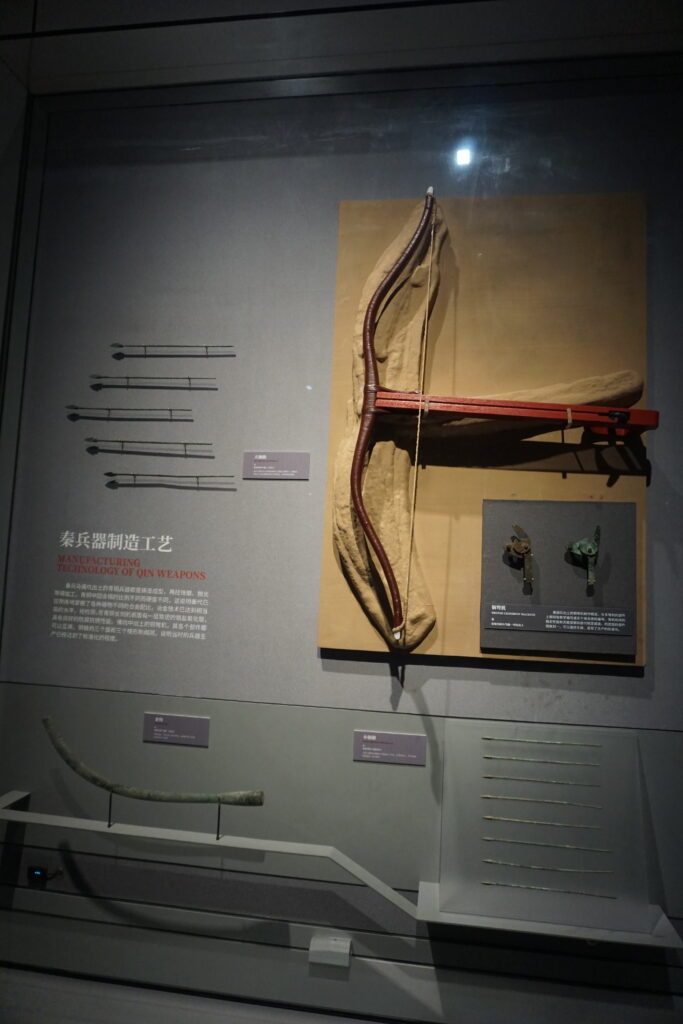
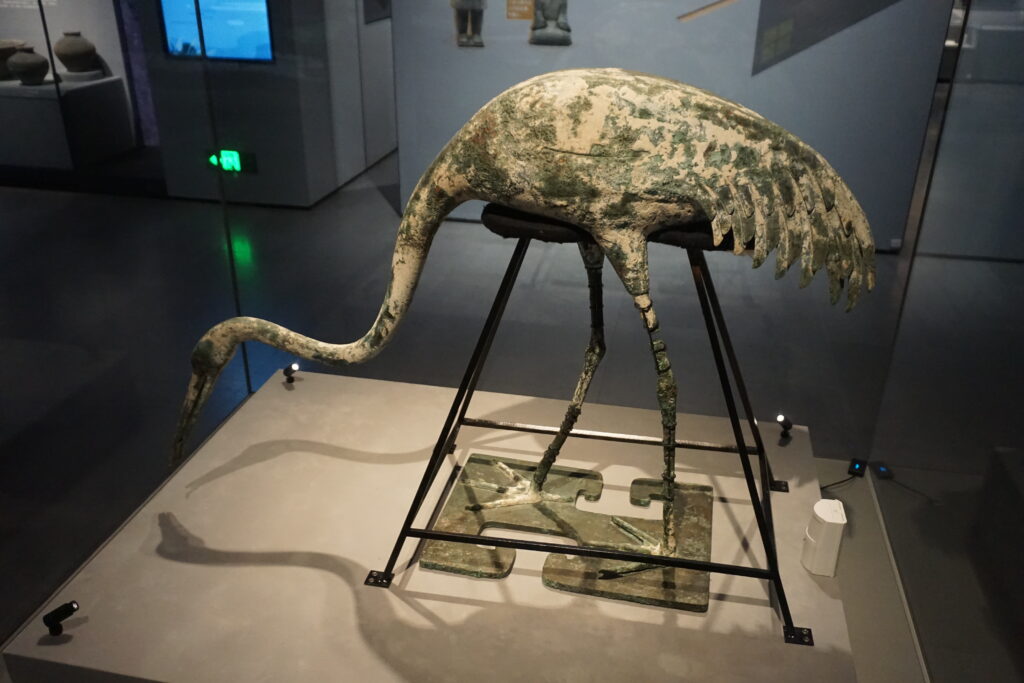
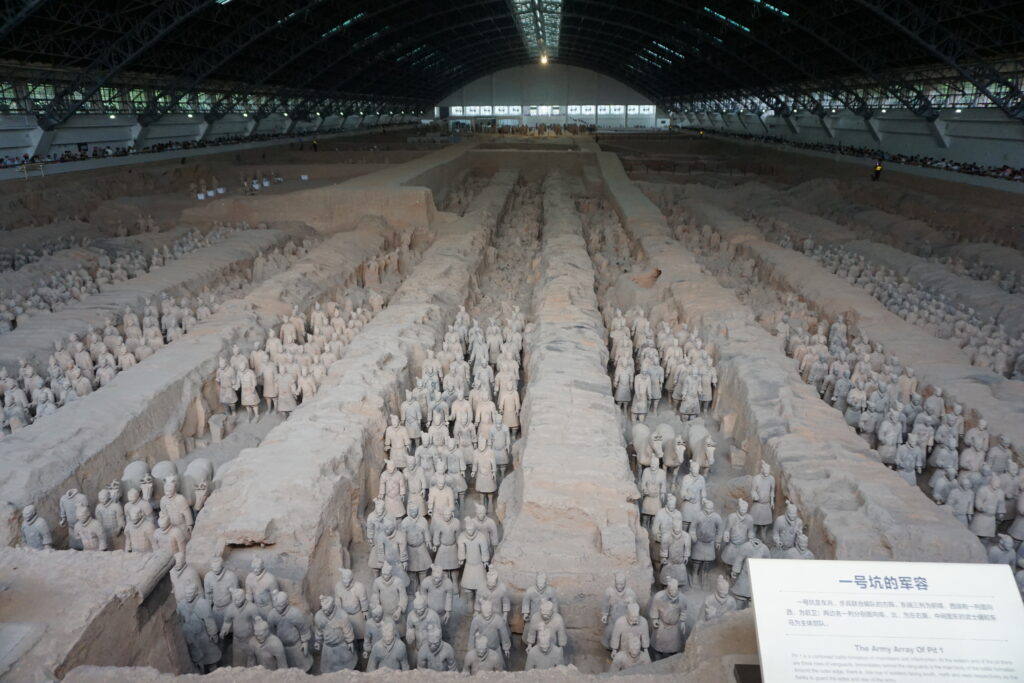
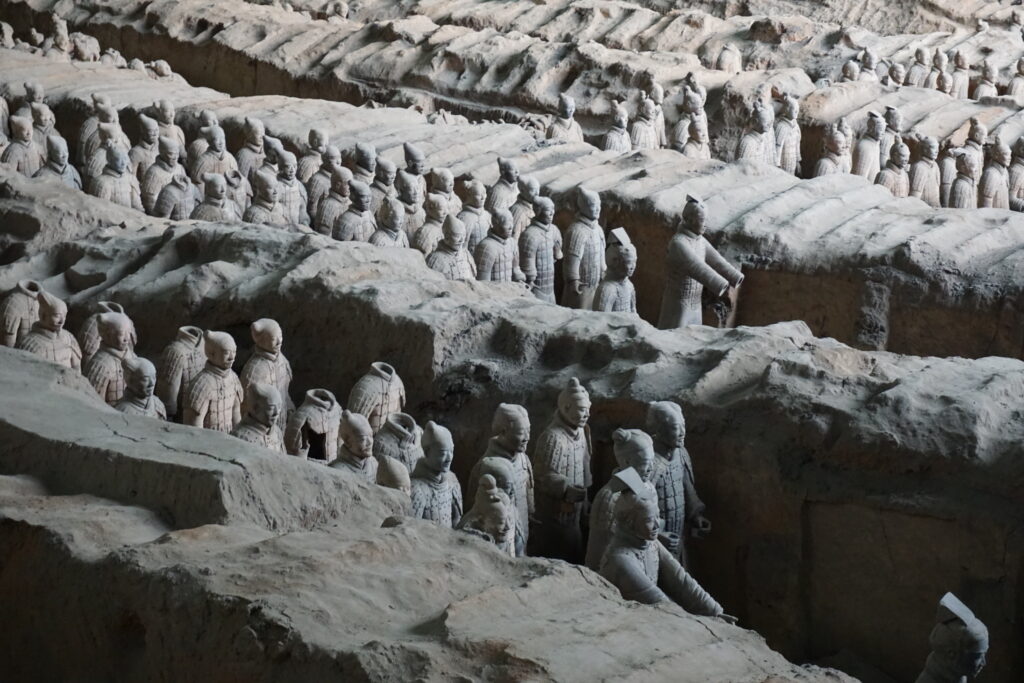
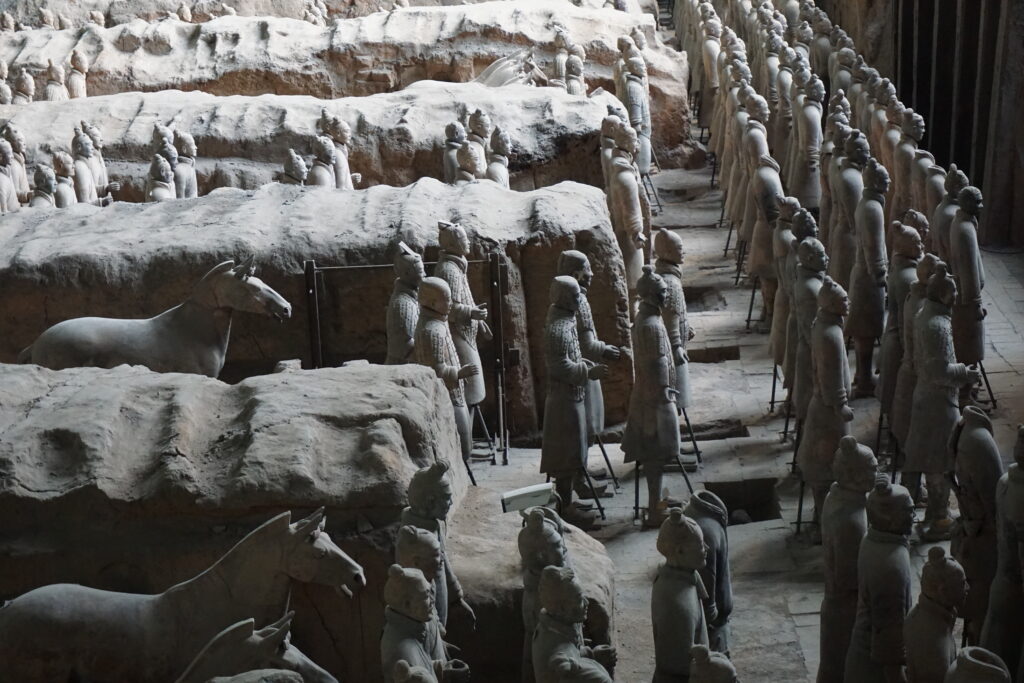
I walked back and ate once I was in my neighborhood. It has been a good day. I had some farm business to take care of on Tuesday and again did not get an early start. I ate lunch at a local restaurant for a bit under $3. I wrote some post cards. I did some laundry. At about mid afternoon, I headed down to the Giant Wild Goose Pagoda. Having learned my lesson about climbing all of these towers, I opted to just look at this one from the outside. A few other folks had told me that I should check out the Tang Dynasty City that Never Sleeps. This is an outdoor mall and display of light shows and sculptures with a Tang Dynasty theme. It certainly isn’t particularly authentic, but it is fun, and has a historic theme.
I walked through this Tang Dynasty outdoor mall a couple of times until night fell. I had some snacks. I people watched. Perhaps the most interesting thing was the number of people dressed in hanfu – traditional Chinese outfits. In Xi’an, people dress in Tang era costumes. For 199 yuan, you could rent a costume and have your makeup done in period style. This seemed to appeal mostly to young ladies, though I noticed a surprising number of men and middle aged adults dressed up. To learn more about hanfu, click the living history tile below.
It was late once I got back, and I needed to get to bed early, as Wednesday would take me to the Terracotta Army site. I had a night train to Beijing on Thursday. I had to leave the hostel at about five p.m. to catch the train. I ran Thursday morning. I walked the Muslim Quarter again. I looked in shops. I ate tasty food. I found the lamb paomo. It was a pleasant experience on the whole. I liked Xi’an. I would have enjoyed spending a few more days there. The pace seemed a bit more laid back, and it was definitely inexpensive. It was more geared toward history.
It seems strange to think of Xi’an as a small, laid back city. Although it ranks just 10th among cities in China for population, Xi’an is bigger than any American city. It is home to nearly 10 million people. It is easy to navigate, not humid, and just a nice place to visit. When tourists visit Xi’an, however, they are coming to see the Terracotta Warriors. That was my primary goal. Mission accomplished!
